Introductory images
1
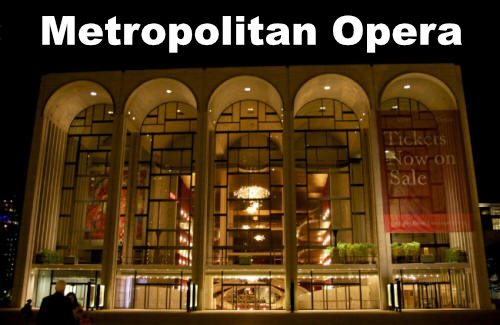
2
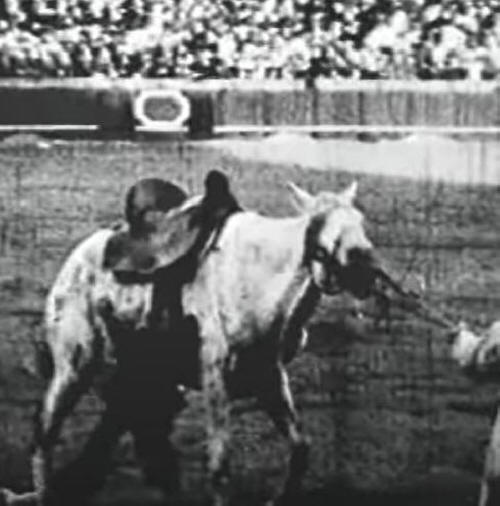
3
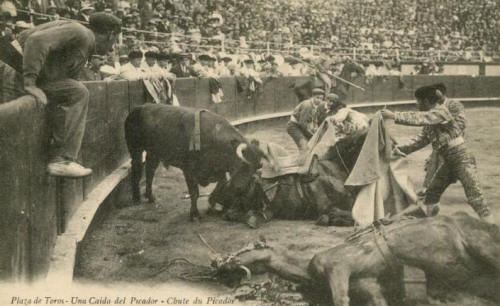
4
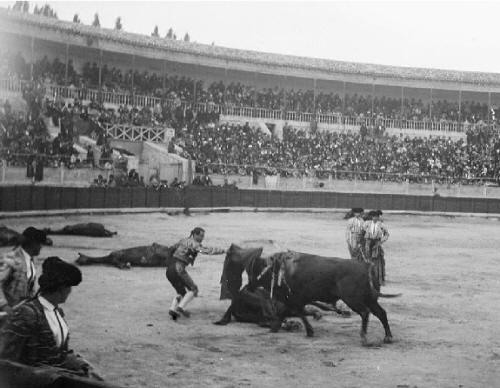
5
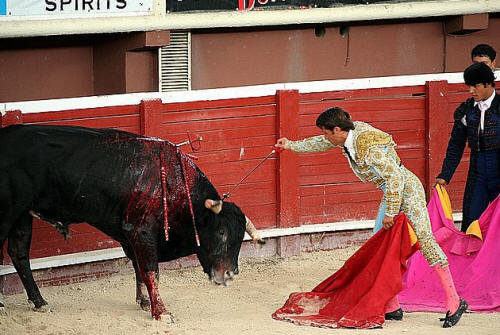 6
6
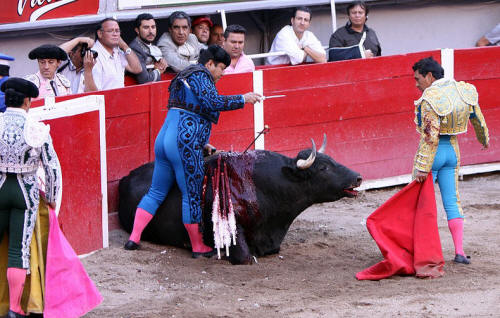
7
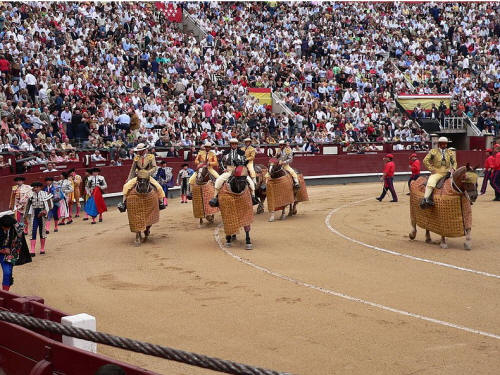
8
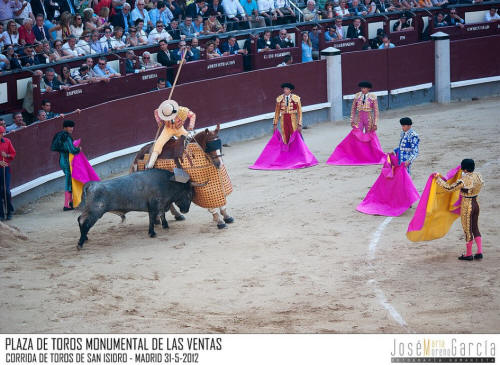
9
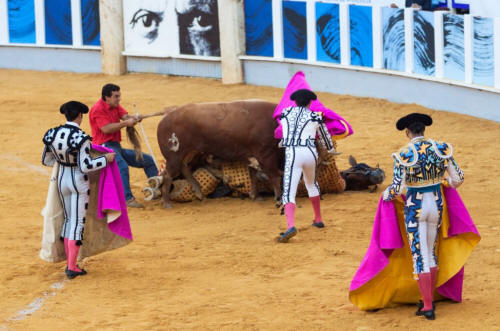
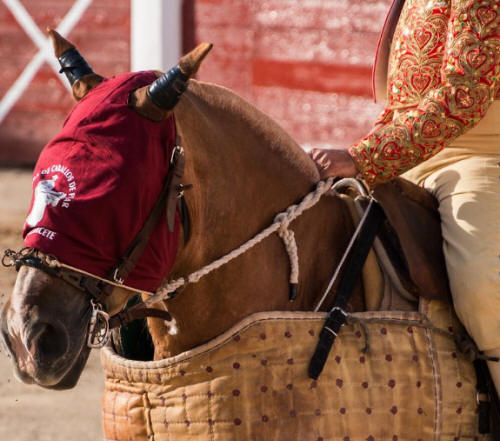
Above, 1. Sleek, sophisticated and attractive: part of
the Metropolitan Opera building. 2. Hideous, barbaric, ugly: a picador's horse, disembowelled. The dark mass below the horse is the
horse's intestines spilling out, one of the countless horses disembowelled
in the bullfight before the adoption of protection for the horses in 1928.
The bullfight in Carmen belongs to this barbaric world. The violent image
comes from this very violent video
https://www.youtube.com/watch?v=ZCTrLWncSjs&list=
PLEB32230D46060ADD&index=46&ab_channel
=guilledh
- a form of violence not just relevant to Carmen but
embedded in Carmen, inseparable from Carmen, but a form of violence not
recognized by the vast majority of the opera houses which have presented
the opera. 3 and 4. More images showing the cruelty to horses in those
times. 5. An attempt to kill the bull with a sword has failed. The
descabello'is used to stab the bull in the spine. It may well take many
thrusts before the attempt succeeds. 6. An alternative weapon to finish off
a bull - a dagger, the puntilla. 7. Parade of the picadors. 8. Picador
stabbing the bull with his lance. This stabbing, or more than one stabbing,
marks the start of a whole series of wounds. 9. The protective mattress
doesn't guarantee protection for the horse. Here, a picador's horse has
fallen and is trapped for the time being. Even when there are no physical
injuries, the terror of the horses can easily be imagined - but not easily
imagined by bullfighting supporters, I would think. 10. The horses of the
picadors are blindfolded. The protective mattress isn't very thick. The
protection it offers is very far from being complete. The terror experienced
by these horses can easily be imagined - but not by people whose capacities
for imaginative compassion in the case of animals are limited, such as
bullfighting supporters.
Admiral Lord Nelson, the victor at the Battle of
Trafalgar, was obviously no sentimentalist, not someone with no
experience of injuries and killings, but this is what he wrote after
attending a bullfight in Spain with some of his men.
‘We felt for the bulls and the horses … How
women can even sit out, much less applaud, such sights is astonishing. It
even turned us sick, and we could hardly go through it: the dead, mangled
horses with their entrails torn out, and the bulls covered with blood, were
too much. We have seen one bull feast, and agree that nothing shall ever
tempt us to see another.
In the bullfight of Nelson's time and Carmen's
time and well into the twentieth century, in fact, until 1929, the number of horses killed in
each bullfight amounted to as many as forty or more. Six horses might be provided for each of the six bulls to be killed. If more horses were
needed, men were sent out into nearby streets to buy some working horses to
be sent into the bullring.
As the bullfight proceeded, as each of the six
bulls was killed, more and more horses were killed or injured, bleeding
profusely. The injured ones might be dragged away or made to stand and
remounted, their blood drenching the sand. By the end of the corrido - the
bullfight - the horrific scene in the arena would resemble the aftermath of
a battle.
A very graphic video which shows a badly injured
horse. This horse was injured in a race, not a bullring. Quite quickly, a
humane killer was used.
https://www.youtube.com/watch?v=5uwkPq_F-ho&ab_channel=tetice%C3%
1oyuca
The treatment of horses in the bullfights of
Carmen's time was utterly different, completely callous, showing horrific
cruelty. No matter how badly injured they were, if they were still
alive, they were pulled to their feet.
Productions of 'Carmen' never show the bloody scene
in all its horror. It would be impossible to do that, of course. There must
be very few productions which show any blood at all. The blood is
simply hinted at, if that. An exception is the production at
Deutsche Oper (the link is to the section in
the column to the left which gives some information about this notorious
production.)
This is a painting
by JL Gérôme with the title, 'La Fin
de la corrida,' 'The End of the Corrida.' It was painted about 1870 and so
at a time when the horses of the picadors were unprotected and suffered
horrendous injuries in very large numbers. The picadors' horses were given
protection (but not complete protection) some sixty years later.
An image of another painting by him is in the
section What if ... Carmen loves a gladiator?
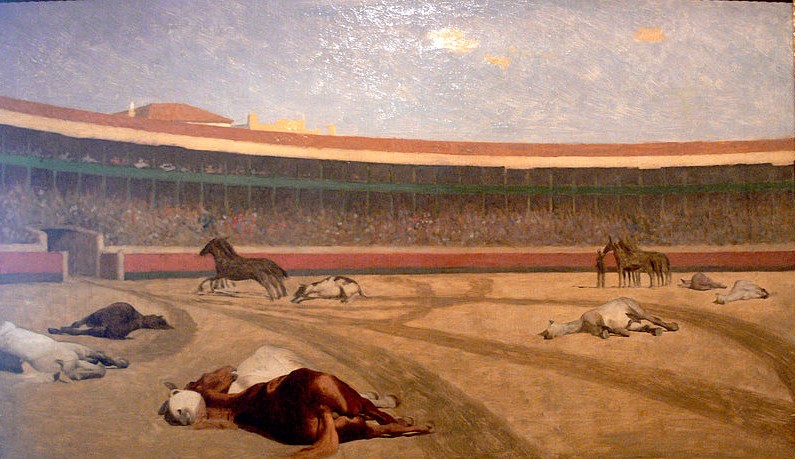
If the typical treatment of the bullfight in
productions of 'Carmen' is a sanitized one, this is a work which, in its own
sphere, is not quite so sanitized, but the painting is evasive. This
seemingly realistic painting is far from realistic. There would be far more
horses lying on the sand - and there is no blood shown at all! None of the
tracks show any signs of blood. In the black-and-white images above which
show dead and dying horses, blood is not shown, but this is for obvious
reasons.
No horse intestines are shown in the painting.. The majority of the
injuries which caused the death of the horses would be disembowellings and
the mass of the intestines near to the horses and the intestines dragged by
the horses along the sand in a bloody track would be impossible to ignore.
But this particular artist has ignored all this.
This is a strange and very evasive painting. In
their very different ways, the directors of
'Carmen' productions have been just as strange and evasive.
An extract from the French translation and an
English translation, Act 2 of the opera:
... this is the moment!
The bull comes bounding
out of the toril!
He charges, comes in, strikes!
A horse rolls over, dragging down a picador!
"Ah! Bravo bull!" roars the crowd;
the bull turns, comes back,
comes back and strikes again!
Shaking his banderillas,
maddened with rage, he runs about!
The ring is covered with blood!
... c'est l'instant
Le taureau s'élance en bondissant hors du toril...
Il s'élance, il entre, il frappe, un cheval roule
Entraînant un picador.
«Ah bravo toro!», hurle la foule.
Le taureau va... il vient... il vient et frappe encor!
En secouant ses banderilles,
Plein de fureur, il court!
Le cirque est plein de sang;
Emphasis in the final line supplied by me. No
attempt will be made in traditional stagings of the opera to show or suggest
'The ring is covered with blood,' 'Le cirque est plein de sang.'
To return to the previous
images, the image of the disembowelled horse is followed by two
images of a number of dead or dying horses which will have received horrific injuries, followed by an image of a 'rejoneador,' a bullfghter who stabs the bull on horseback.. The
horses in this form of bullfighting are unprotected and are sometimes disembowelled.
The Las Ventas bullring, like others, has a team of veterinarians. These
attend to the the horses injured in the bullring. They offer no help to the
bulls.
Then there's an image of a bull about to be stabbed in the
spine with the descabello, perhaps many times. As usually happens, the sword
intended to kill the animal has failed to kill it. The sword is embedded in
the bull and the handle is visible. The number of stabbings a bull receives
in the contemporary bullfight is always a minimum of eight - the first
stabbing with the lance of the picador, six stabbings with the banderillas
and a stabbing with the sword of the matador but it's very often many more.
In my page on bullfighting I give a case of a bull which was stabbed by the
lance of the picador, the banderillas and the sword of the matador - which
failed to kill the animal. Then, it was stabbed 17 times in the spine
with the descabello. Another weapon used to finish off a stricken bull
by stabbing it in the spine is a dagger called the puntilla. Again, multiple
blows are often involved.
The final image in this series shows a bull with sword
embedded in its back but still very much alive, about to be stabbed in the
spine with a short knife, the 'puntilla,' perhaps many times. The image
shows a bullfight in San Marcos, Mexico. Bullfight believers will regard San
Marcos as an important cultural centre in Mexico. Not so, not in the least,
opponents of bullfighting. The Wikipedia entry for the place gives this
information about the
'Feria Nacional de San Marcos:'
'The
fair is host to a large range of activities, of which bullfighting and
cockfighting are the most popular.'
In the 'Carmen bullfight,' the bull was always stabbed far
more than eight times. The picador's lance was lighter than the one used in
the contemporary bullfight and there were always
multiple stabbings with the lance.
The fictional Carmen was obviously a woman who
could sit out and applaud such sights, multiple stabbings, multiple
disembowellings, a woman who wasn't sickened by the
violence of the bullfight, a woman who could applaud the dead, mangled
horses with their entrails torn out and the bulls covered with blood.
From the libretto of the opera, referring to Escamillo the matador, Escamillo, the bull-killer - who, far more often
than not,
will have left his sword embedded in the bull and left the bull very much
alive, needing much more work before the bull was actually killed:
'Long live Escamillo! Ah bravo!'
'CARMEN
Ah, I love you, Escamillo. I love you.'
To choose such a woman as a feminist icon is a
grotesque choice, and very disturbing.
What if ... Carmen loves a gladiator?
We know a great deal about what went on in Roman amphitheatres, what went
on in bullfighting arenas, what happens now in bullfighting arenas (some of
them dating from Roman times and used for killing, killing of a much
more varied kind, as I point out.) Despite all the differences, there are
similarities between the Roman spectacles of cruelty and the spectacles of
bullfighting cruelty:
the intoxicating, delirious responses of the crowd, so often, vivid
colour ('the ring is covered with blood' (from 'Carmen'),
the use of music to 'enhance' the experience,
the rules that constrain the action in the Roman amphitheatre and the
bullfighting arena, whilst freely permitting atrocious cruelty, the women
who fell for gladiators, the women who fell for a bullfighter (for example,
Carmen), the women who still do. The appeal is memorably expressed by
the Roman poet Juvenal:
'What was the youthful charm that so fired Eppia? What hooked her? What
did she see in him to make her put up with being called "the gladiator's
moll"?'
She was infatuated with a bullfighter called 'Sergius.'Juvenal
makes it clear that Sergius was very unattractive. 'But
he was a gladiator. That word makes the whole breed seem handsome, and made
her prefer him to her children and country, her sister, her husband. Steel
is what they fall in love with.'
This, from Act 2 of the opera, is the claim of the
bullfighter Escamillo:
The ring is packed, it's a holiday,
the ring is full from top to bottom.
The spectators, losing their wits,
yell at each other at the tops of their voices!
Exclamations, cries and uproar
carried to the pitch of fury!
...
Toreador, on guard!
And remember, yes, remember as you fight,
that two dark eyes are watching you,
that love awaits you!
Toreador, love awaits you!
With the replacement of 'toreador' by 'gladiator,'
this, from the bullfighting festival of cruelty would fit the Roman festival
of cruelty exactly.
From Act 4 of the opera, beginning with the Chorus:
It's the Matador, the skilled swordsman,
he who comes to finish things off,
who appears at the drama's end
and strikes the last blow!
Long live Escamillo! Ah bravo!
Here they are! here's the cuadrilla! etc.
ESCAMILLO (to
Carmen)
If you love me, Carmen soon
you can be proud of me.
CARMEN
Ah! I love you, Escamillo, I love you,
and may I die if I have ever loved
anyone as much as you!
TOGETHER
Ah! I love you!
Yes, I love you!
Is this really love, or
infatuation brought on by the poisonous and mistaken allure of a
bullfighter-killer for Carmen and the not in the least deep approximation of
feeling shown by the bullfighter-killer Escamillo for Carmen? The quality of
the music is what will convince the audience, or most of the audience or
some of the audience - in a musically successful production - or get the
audience to believe something which isn't shown by the non-musical side of
the production.
What if the Romans had worked on the sadistic acts
carried out in their arenas, had taken care to add a certain artistry, to
make the sadistic acts far more than acceptable to sophisticated people?
The retarius was a gladiator who could use his net to try to entangle
his heavily armoured opponent and who could then stab him with the
three-pointed trident he carried, or with his knife. The tactics were quite
varied and relied upon speed and agility. It would have been quite easy for
the retarius to use the net in a graceful manner, with similarities to the
use of a cape in bullfighting. The retarius could have pranced around the
ring and adopted poses with similarities to the antics of bullfighters. The
music could have been improved - although no attempt has been made to
improve the music played at bullfights.
The procession of the gladiators into the
amphitheatre could have been improved, to make it into a spectacle which
matched the spectacle of the bullfighters entering the arena. This, from
'Carmen,' would apply to the Roman event, with the change from 'banderilleros'
to 'gladiators.'
Look at the banderilleros!
See what a swaggering air!
See them! See them!
What looks, and how brilliantly
the ornaments glitter
on their fighting dress!
More could have been made of the final sword thrust
or dagger thrust which ended the life of a defeated opponent in the ring -
something similar to the 'moment of truth' claimed for the killing of the
bull is killed. But I point out that the very quick, almost instantaneous
killing of the bull is quite uncommon in the bullring. The reality is far
more often much more extended, involving attempts to get the sword in the
bull's back to move, to reach a vital spot, and / or hacking at the spine,
often, many times. The killing of a defeated gladiator in the Roman arena
would have been far quicker and more dependable.
But no 'artistic' innovations could possibly have
redeemed what went on in the Roman arenas. It tainted Roman 'civilization.'
Abolition was an absolute necessity. Although the cruelty of the
bullfighting arena is very different, despite some similarities, abolition
of the corrida is an absolute necessity.
Please see also the section below
Bullfighting as an art form. Bullfighting and tragedy
which includes discussion of the Roman
arenas, what went on in the arenas - much more than fights between
gladiators. 'One picture is worth a thousand words' but a thousand words, or
less but often far more, may be needed to correct the misleading impressions
which can be given by an image.
All the images in this section are
misleading. All of them, including the first, don't convey the realities of
the killing in the Roman amphitheatres, their degrading horrors.
Images of bullfights (or 'bull-stabbings') and the even worse bullfights of
the past ('bull stabbings with horse disembowellings) do convey, in most
cases, the realities of killing in the bullring. If colour photography and
filming had been available when horses were disembowelled in very large
numbers in bullrings then the realities of horse killing would be presented
very, very forcefully but the existing monochrome records present it
powerfully, as do written records. Empathy can work with very limited
records.
1

2
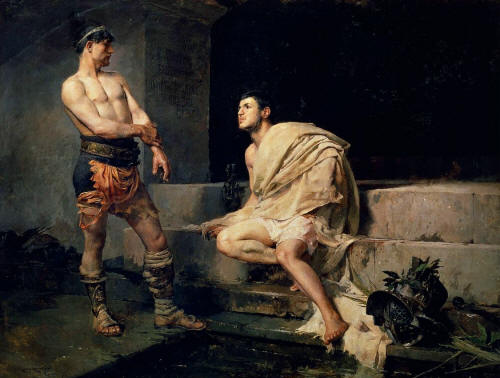
3
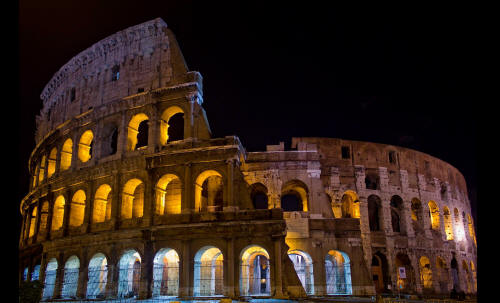
4
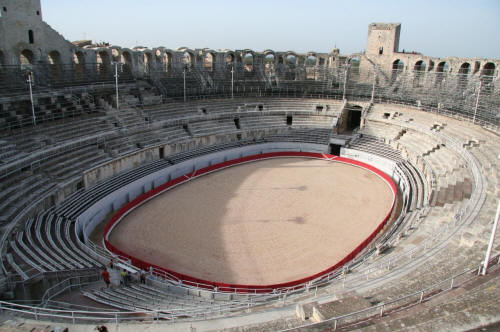
5
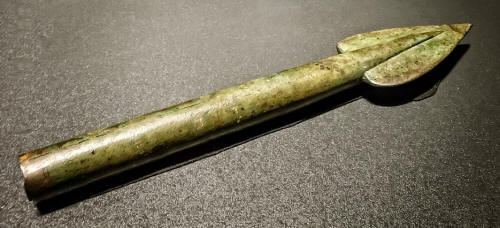
6
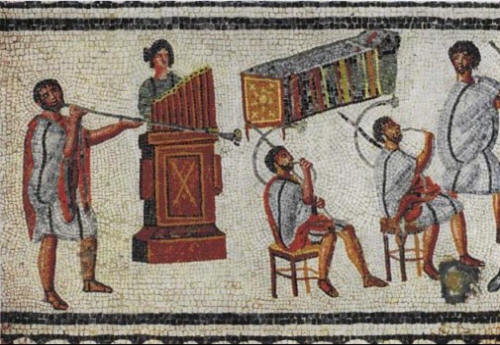
7
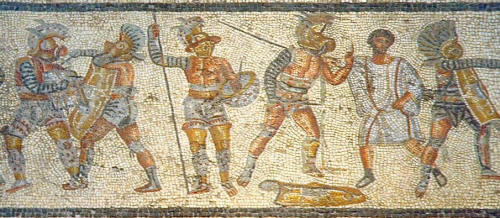
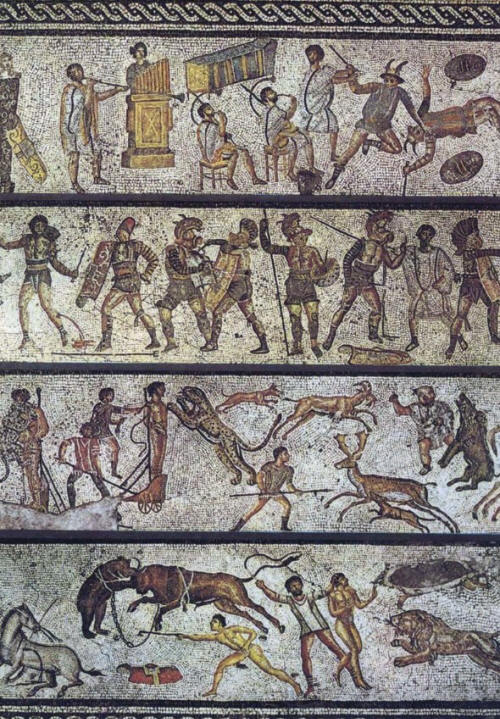
8
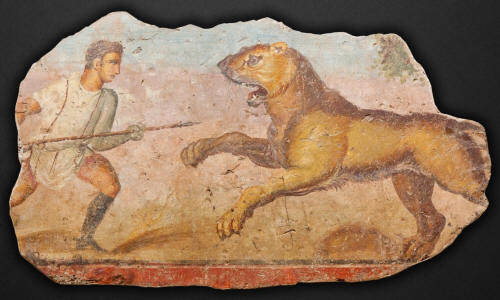
Images above: information
1. Painting by
Jean-Léon Gérôme, 'Pollice verso,' the turned thumb signifying the
bloodthirsty crowd's call for a defeated gladiator to be either spared or
killed. The bloodthirsty crowd includes vestal virgins, the women in white
shown in the painting. women in white are vestal virgins. After the
'reforms' of the emperor Augustus - these were not strongly enforced - women
were confined to the upper rows of an amphitheatre. Only the Vestal virgins
were seated lower down. An image of another painting by him, 'La Fin de la
Corrida' is given in the section above
Introductory images.
2.
Painting by Jose Moreno Carbonero, 'Gladiators after the fight.'
3. The Colosseum, where gladiators fought gladiators, gladiators fought wild
animals, wild animals were hunted and where executions, including mass
executions took place.
4. The Roman amphitheatre at Arles,
where gladiators fought gladiators, gladiators fought wild animals, wild
animals were hunted and where executions, including mass executions took
place, where bulls were slaughtered and horses disembowelled in the corrida
and where bulls are still slaughtered, but not in the least by the
instantaneous killing of humane slaughter.
5. Spear head found in the the gladiator barracks at Pompeii.
6. Bullfights have bands and there
were bands in Roman amphitheatres.
Shown in this image, musicians with trumpet (tuba), water
organ
(hydraulis),
and horns (cornua).
From
the gladiator mosaic
at Nennig, Germany.
7.
Gladiators, including gladiators fighting other gladiatars and
gladiators fighting animas. Part of the Zliten
mosaic from Leptis
Magna, Libya.
8. Mural of a hunt, showing a venator
attacking a lioness, from the amphitheatre at
Mérida,
Spain. The amphitheatre is in ruins and has not been converted
into a place to hold bullfights. It did have a place to hold the
animals before they were sent into the arena to be killed, just as present
day bullfighting arenas have places to hold the bulls before they enter the
arena.
Bullfighting
as an art form. Bullfighting and tragedy
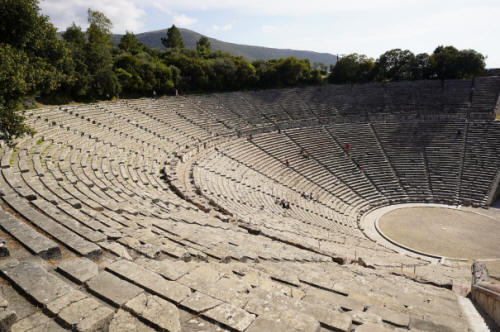

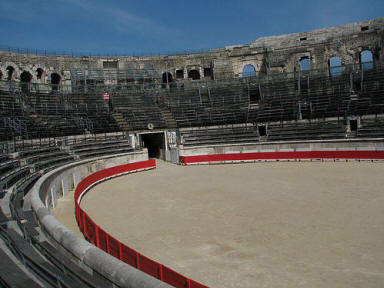
The first picture here shows the ancient Greek theatre at Epidauros. The
second picture shows the Roman theatre at Augusta Raurica near Basel and one
of the most important archaelogical sites in Switzerland. There are also the
remains of an amphitheatre in Augusta Raurica, which is the earliest known
Roman site on the Rhine. The third picture here shows the Roman arena at Nîmes
in France, constructed when it was part of the Roman Empire.
These places represent vastly different aspects of civilization, at
vastly different levels of achievement, the amphitheatres the shameful and
diseased dead end, or what should have been the dead end - bullfighting has
continued the line - the theatres growing points, part of the
history of theatre - and opera is an immensely rich and varied and complex
form of theatre, a summation, the most diverse of all art forms, of course,
uniting word, orchestra, staging, design, sombre design as well as colour
and spectacle - but spectacle which, unlike the spectacle which is part of
the bullfight, is untainted by its association with the gross cruelty
which is inflicted.
A sign in English in the arena at Nîmes gives information about
events there in Roman times: 'All day long, to the roars of the crowd and
the sound of trumpets, the arena staged one show after the other: animal
fights, hunts, executions and, topping the bill, gladiatorial contests. 'French arenas dating from
Roman times, the one at Nîmes and the one at Arles, are used for an activity which
is in a clear line of descent from the past: for the spectacle of killing.
More images of the theatre and its long and eventful
history - which includes opera. Music was part of the theatrical
performances in ancient Athens. We have no record of this music but we can
be certain that it was incomparably less developed and important than the
music of the operatic masterpieces and the operas which are far from being
masterpieces.
More images: simple reminders of some theatres and some
masterpieces. The first image shows a theatre constructed in Roman times,
the second and third images show the Estates theatre in Prague, the setting
for the first performance of Mozart's 'Don Giovanni,' which contains
violence, but violence which has no linkages with the violence of
bullfighting arenas.
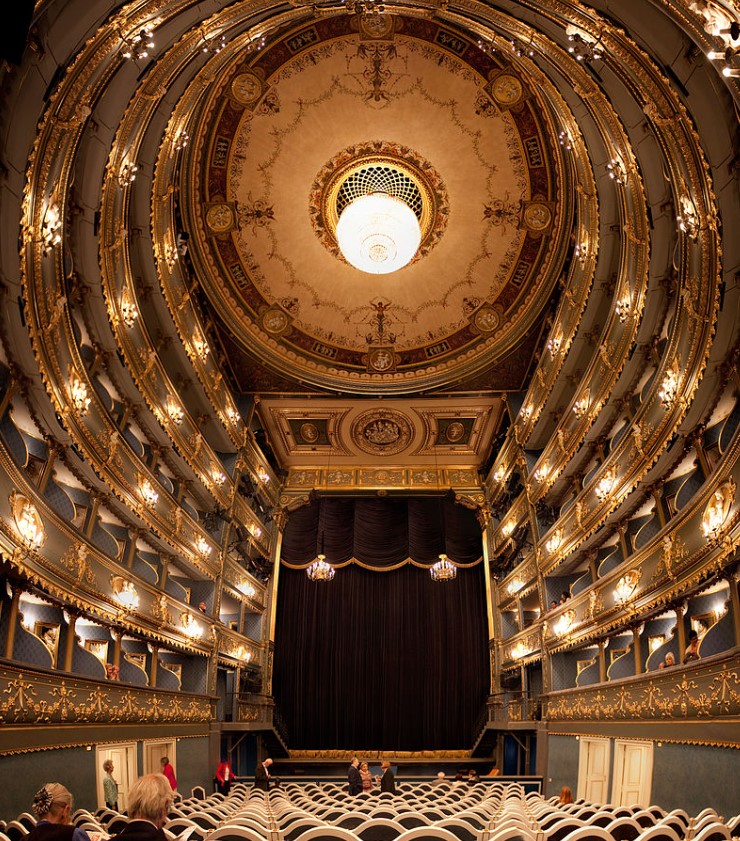
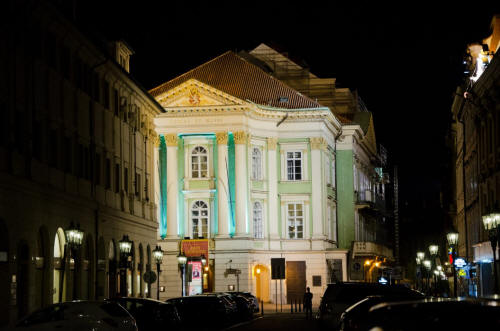

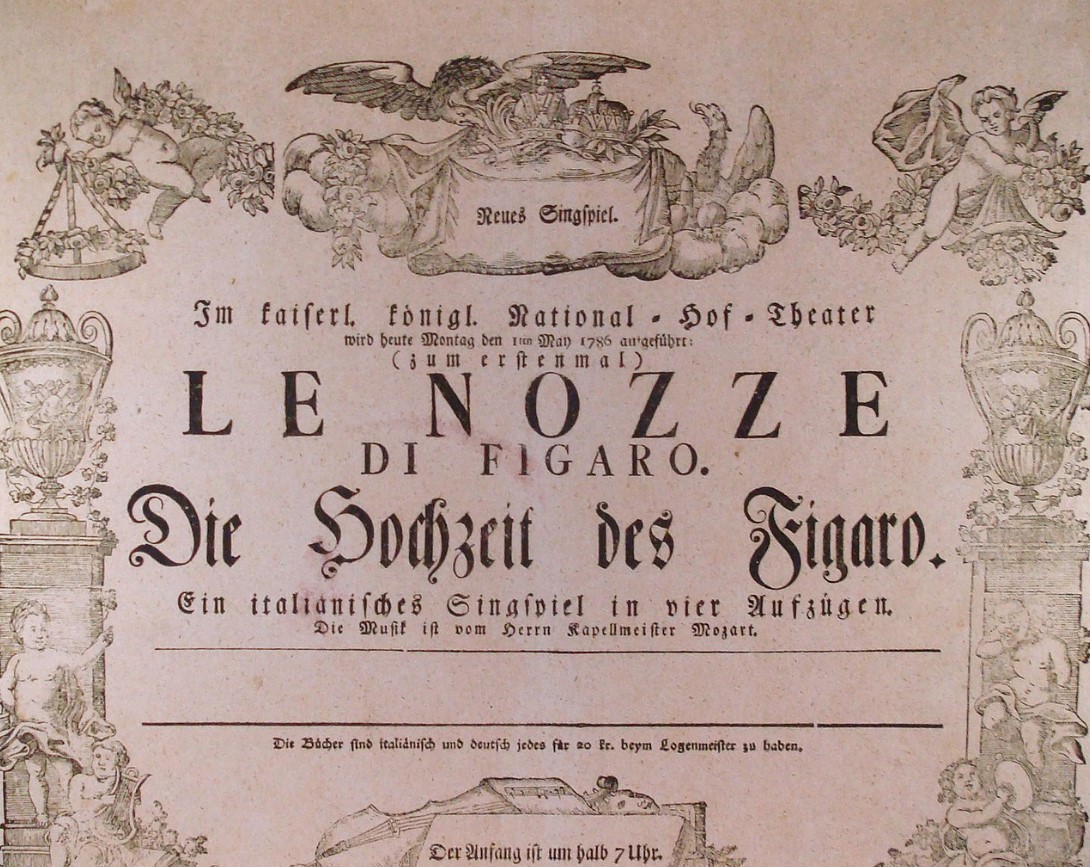
The Roman arenas were used for diverse spectacles, all of them brutal and
bloody, of course. Gladiators fought each other, very often to the death, gladiators
fought and killed wild animals - lions, tigers, bears, bulls, elephants and
others - and there were executions, which were sometimes conducted with a
degree of depraved 'artistry.' Katherine E. Welch,
'The Roman amphitheatre from its origins to the Colosseum:'
' ... condemned criminals dressed up as characters from Greek mythology
... were forced to perform and, at the performance's climax, were put to
death ... The difference between these mythological executions in the
amphitheatre and Greek dramas in the theatre were commented upon by Martial
as an improvement.'
Bullfighting is very different from the gladiatorial combats against wild
animals (the 'venationes') but is clearly descended from them. Instead of a variety of wild
animals, the bull is the only animal to be put to death. The death of the
gladiator who fought the wild animals in the amphitheatre was very common,
the death of the bullfighter in the bullring very uncommon. The more
sensitive members of the Roman audience might justify the barbarity they
were witnessing with the thought that they were also witnessing displays of
skill and courage. More sensitive members of the bullfighting audience at Nîmes
and Arles may justify the barbarity they are witnessing with the thought
that they too are witnessing displays of skill and courage - and
'artistry.' I examine the supposed 'artistry' of the bullfight here, and in
my main page on bullfighting.
It would have been
perfectly easy to have made the combat of Roman gladiators into something with
claims to artistry just as good as the claims of the modern bullfight, the
artistry of both (at the lowest possible level) undermined by their moral
depravity. To claim that a practice is 'art' is far from justifying it. If
Greek tragedy had developed in such a way that there was the actual
death on stage of performers, the emotion of the spectators might have been
heightened, but of course at ruinous cost. The Greeks never took this step.
In classical Greek drama, when a killing took place it was shown behind
the 'skene,' as it was thought inappropriate to show a killing on stage,
giving us our word 'scene.'
Italians decisively abandoned
this, the worst part of the Roman heritage, after the Colosseum became a ruin.
'In 1332 Ludwig of Bavaria visited Rome and the
authorities staged a bullfight at the Colosseum in his honour. It was the
first time in more than eight hundred years that such an event had been
witnessed, so naturally the public turned out to watch in great numbers,
though no one, not even the organisers, seems to have realized that this had
been one of the Colosseum's original functions.' Peter Connolly, 'Colosseum:
Rome's Arena of Death.'
What have the Italians
done with the Colosseum? The Colosseum has been used for something which is
imaginative, something which marks a complete break with its past, something
in which Italians can take great pride. As another page on this site makes
clear, I actively oppose the death penalty (but not in all circumstances) and the Colosseum's new use as
a symbol of opposition to the death penalty pleases me no end. When a country
abolishes the death penalty or the death sentence of a prisoner is commuted,
the Colosseum is lit up. The Roman amphitheatre at
Verona is often used for staging opera and other musical performances.
The Romans devised brutal spectacles with bullfighting as the only modern
descendant. Greek theatre was incomparably richer, incomparably more
important, no less
than the creation of tragic drama and comic drama, and works, by Aeschylus,
Sophocles, Euripides and Aristophanes, of remarkable artistry. The range of
the surviving works is astonishing, expressing pathos, harshness, human
savagery and cruelty, sympathy for the victims of human savagery and
cruelty, grandeur, beauty, wonderment, tenderness, gentleness, chance,
unexpectedness, parody, crude humour and sophisticated humour, eroticism,
fun and mature vision, excess and restraint, and so much more, of course,
and so much more than the cramped and primitive world of bullfighting.
The full range of civilization's achievements should be defended,
promoted and of course extended - not just civilization's abolition of past
cruelties and efforts to abolish present cruelties but so much else as well,
including a vast treasure of subtle insights and nuances. It will always be to the credit of this country that it
continued the fight to end Nazism - and also that it decided not
to neglect every aspect of civilization which didn't contribute to the
country's physical survival. In desperate circumstances, at the low point of
1940, for instance, cultural and scholarly publication continued.
Amongst the works published in that year was the ninth edition of the
monumental Greek lexicon of Liddell and Scott, the current edition, which
enhanced the study of Homer, Thucydides, Aristotle and the Greek dramatists
and the rest of ancient Greek achievement in
words.
If
the legacy of the Roman amphitheatre is bullfighting, the legacy of
Greek theatre includes, of course, the tragedies and comedies of
Shakespeare and other dramatists, and non-dramatic comedy for that matter.
If the literary artistry of Greek theatre is its
main claim upon our attention and most deserves our admiration, there were other aspects of Greek theatre
which came to have enormous influence too. Greek theatre was a spectacle as
well as a form of literature, combining words with music and dance. The
ancient Greeks never attempted opera - its invention was an Italian
achievement - but by their use of music they paved the way for opera.
What aspects of human
life and experience does bullfighting leave out? Almost all. The 'artistry' of the
bullfight has to be compared with the rich, radiant, complex, powerful, sometimes
transcendently beautiful art-works which have been created in painting, architecture,
theatre, instrumental music, vocal music, opera, music, literature, the ballet and other arts. Schiller referred
to the stage as 'Die Bretter, die die Welt bedeuten.' 'The boards that
signify the world.'
Hemingway, 'Death in the
Afternoon:' 'Bullfighting is the only art in which the artist is in danger
of death.' I would emphasize a different aspect. Bullfighting is the only
art form where the artist inflicts suffering and death, the only art form
which is morally wrong. Bullfighting is the pariah amongst the arts. Suffering
and death have enough power. An art should do nothing to increase it. In other
arts, suffering and death are confronted, explained, found impossible to explain,
raged against, transcended, balanced by consolation and joy, not inflicted.
In my main page on bullfighting, I examine in detail Hemingway's claim and
show that the risk of being killed in the bullring is very, very low. Millions
of ordinary (and extraordinary) people have faced vastly greater risks in time
of war. Mountaineers face vastly greater risks - without any of the ridiculous
posing of bullfighters and their supporters.
Hemingway, 'Death in the
Afternoon,' of bullfighting: 'If it were permanent it could be one of the
major arts, but it is not and so it finishes with whoever makes it.' Hemingway
thinks of bullfighting as a minor art form, then, not a major one. His view
of the performing arts - and if bullfighting is an art, then it's a 'performing
art' - is open to question. Great performances in the true arts are surely
something of major, not minor, significance. What I would assert is that amongst
the performing arts, bullfighting is at rock bottom.
F. Scott Fitzgerald, 'The
Great Gatsby:' 'The other car, the one going toward New York, came to rest
a hundred yards beyond, and its driver hurried back to where Myrtle Wilson,
her life violently extinguished, knelt in the road and mingled her thick dark
blood with the dust.'
Although the cause of
death is technologically advanced, death by motor vehicle, this fictional
account seems, at first sight, to resemble the much older
world of the Iliad, the Homeric character dying in the dust. When Homer
recounts a violent death, he makes frequent mention of dust. One of many
examples is Iliad 13: 548.
In her fine introduction to Anthony Verity's fine
translation of 'The Iliad,' the classical scholar Barbara Graziosi writes,
'Vivid, painful, and direct, the Iliad is one of the most
influential poems of all time ... This poem confronts, with unflinching
clarity, many issues that we had rather forget altogether: the failures of
leadership, the destructive power of beauty, the brutalizing impact of war,
and - above all - our ultimate fate of death.' Its many readers 'have turned
to it in order to understand something about their own life, death, and
humanity.'
I've already given reasons why it's
an act of callousness, gross ignorance, contemptible stupidity to think of
the death of horses as comic. I focus now on tragedy. Here, bullfight apologists
are on no surer ground.
'Tragedy' has a very wide
meaning now. Almost all human deaths are 'tragic' apart, that is, from the
deaths of very old people.The word has come to mean not much more than 'very
sad' and 'very regrettable.' The clam that the death of the bull is tragic
goes beyond this. Bullfight apologists don't claim that the death of the bull
is 'very sad' or 'very regrettable.' If they did, they would want to avoid
the death by abolishing the bullfight. What they are doing is claiming a linkage
with literary tragedy. The study of literary tragedy is the essential background
to any claim that the bullfight is a tragedy. Certainly, I'd expect bullfight
apologists to have done the necessary study, before any mention of the death
of the bull as 'tragic.'
Bullfight apologists
tend to have a simplified understanding of tragedy, focussing attention on the
solitary death of the tragic protagonist, identified in bullfighting with
the bull. In fact, very many tragedies don't end with the death of the protagonist.
If the protagonist does die, the death of the protagonist may be quiet and
uneventful, lacking the distinctive characteristics of tragic death. Other
characters may die together with the protagonist, so that the effect of a
solitary tragic death is blunted.
It would be difficult to overestimate the importance and the influence
of Aristotle's 'Poetics,' despite its brevity, as an examination of tragedy,
although tragedy is only one of its themes. My comments here are necessarily
brief. Very much to be recommended is reading the 'Poetics.' One accessible
version is published by Penguin Classics, with an illuminating introduction
by the translator, Malcolm Heath, which will be instructive reading for the
average bullfighting supporter, naively convinced that bullfighting is a tragic
form and the bull a tragic protagonist. In the brief extracts below, though,
I use my own translations from the 'Poetics.'
In the analysis of tragedy,
plot is the primary element for Aristotle. He devotes chapters 7 - 14 almost
entirely to his analysis of plot. He distinguishes simple from complex plots,
claiming that complex plots are superior. Examining the many complex tragic
plots which were familiar to Aristotle and which date from after the time
of Aristotle, we can appreciate and admire, their lack of uniformity, their
very great differences, their subtle differences, the richness of this one
part of cultural history: the enormous differences between the fully-achieved
tragic worlds of Hamlet, King Lear, Othello, Oedipus the King, Agamemnon,
Medea and the rest.
The plot of the bullfight
is simple, primitively simple, and repetitious. Bullfighting supporters love
the special terms in Spanish which give them the feeling that they are insiders,
that they know the meaning of potent special words, one denied to outsiders.
So, both Hemingway's 'Death in the Afternoon' and A L Kennedy's 'On Bullfighting'
include Glossaries of these Very Important Words. Although an outsider, very
much an outsider, I use some of these terms here.
The primitive plot of the
bullfight consists of these three 'Acts:'
First Act: Suerte
de Varas, 'The Act of Spears' in which the bull is stabbed with the lance
of the picador.
Second Act: Suerte de Banderillas, in which the bull is stabbed with
six barbed darts.
Third Act: Suerte de Matar, also known as the faena, 'The
Act of the Kill,' in which the matador kills the bull with a single sword
thrust, more than one sword thrust, or by hacking at the spine once or repeatedly.
People who pay money to
see one 'performance' will see the Suerte de Varas, the Suerte de Banderillas
and the Suerte de Matar repeated six times, since six bulls are killed. Anyone
who sees 100 bullfights will see these Acts repeated 600 times.
The complexity
and richness frequently found in the plots of literary tragedy are so often
accompanied with complexity
and richness of character - the hesitations, doubts, deviousness, goodness,
moral badness, the whole inner life and all the actions of the protagonist
and the other characters. Although bulls are varied, 'cowardly' or 'brave,'
predictable or unpredictable, with a degree of individuality, Oedipus, Hamlet
and King Lear are infinitely more varied, more richly varied, and the tragedies
in which they appear are infinitely more varied, more richly varied, than
any bullfights. Again, the bullfight is primitive by comparison with a work
of achieved literary tragedy. Bullfighting apologists make a great deal of
the 'knowledge of bulls' possessed by the bullfighters and the better-informed
elements of the audience. But again, this knowledge is surely pitifully limited
in comparison with the knowledge and the insight needed to appreciate adequately
the masterpieces of literary tragedy.
In the bullfight, the
fate of the protagonist, the bull, is rigid and predictable - the bull always
dies, except for those rare occasions when pardoned, and everything in the
bullfight leads up to the death of the bull. The death of the tragic protagonist
which is central to the bullfight plays a less important role in literary
tragedy in some cases.
Aristotle hardly mentions death in tragedy in the 'Poetics.' His examination
of tragedy was based upon a much greater number of Greek tragedies than the
ones available to us, of course. At the beginning of his discussion, he gives
a definition of tragedy, which makes no mention of it. The account, including
its important terms, require extended analysis. Below, I give particular
attention to 'magnitude,' μέγεθος
'Tragedy is an imitation of an admirable
action, which has completeness and magnitude, in language which has been made
a source of pleasure, each of its species separated in different parts; performed
by actors, not through narrative, and giving through pity and fear the purification
of these emotions.'
ἔστιν οὖν
τραγῳδία μίμησις πράξεως σπουδαίας καὶ
τελείας μέγεθος ἐχούσης, ἡδυσμένῳ λόγῳ χωρὶςἑκάστῳ
τῶν εἰδῶν ἐν τοῖς μορίοις, δρώντων καὶ οὐ δι᾽ ἀπαγγελίας,
δι᾽ ἐλέου καὶ φόβουπεραίνουσα τὴν τῶν τοιούτων
παθημάτων κάθαρσιν.
The surviving Greek tragedies of Aeschylus,
Sophocles and Euripides are in accordance with Aristotle's discussion: the
death of the protagonist is far from being invariable or if it does occur is
not necessarily a distinctive tragic death.
A few examples, from each of these tragedians. Aeschylus' 'The Persians' takes
place at the court of the Persian king. A messenger arrives to announce the
Persian defeat at the hands of the Greeks - this based on historical fact.
King Xerxes arrives, a broken man, and the play ends with him a broken man.
The first play of Aeschylus' Oresteian trilogy portray the death of Agamemnon,
the second the death of his murderer Clytemnestra at the hands of Orestes,
but the third play, 'The Eumenides,' portrays the acquittal of Orestes and
is without a tragic death. In Sophocles' 'Oedipus the King,' Oedipus survives.
When he does die, in 'Oedipus at Colonus,' his death is quiet, not a violent
tragic death.
Sophocles' 'Philoctetes' has a 'happy ending.' (See
my examination
of Seamus Heaney's version of the play which includes my own
translations and comments on the production of the play.) Euripides' 'The Women of Troy'
portrays the sufferings of a group of women from a captured city awaiting
slavery. The tragedies of the seventeenth century French dramatist Corneille,
like 'Philoctetes,' end happily.
The
tragedies of Shakespeare do show the death of the protagonist, but although
each of these takes place in what is obviously a tragedy, I'd argue that they
are not necessarily tragic deaths, deaths with the distinctiveness of tragic
deaths. In Hamlet, for instance, the death of Hamlet lacks tragic distinctiveness
because it is part of a general blood-letting - Shakespeare to this extent
repeating a notorious aspect of Titus Andronicus with vastly greater and more
mature artistry. In a short period of time, not only Hamlet dies but Gertrude,
Laertes and Claudius. The entire royal family is finished off. The death itself
may be strangely muted, at least in comparison with the highly charged and
dramatically momentous events which have preceded them, as with the deaths
of Othello, Macbeth and King Lear. The death of King Lear has a linkage with
the quiet death of Oedipus.
The three 'Acts' which
end with the death of a bull, repeated six times in a bullfight, last altogether
about a quarter of an hour or a little longer. I write about this time-scale
in my page aphorisms:
'There are no great theatrical
masterpieces which last only a quarter of an hour. They need longer than that
for their unfolding, to have their impact. '
Aristotle, in the 'Poetics,' wrote
that 'Tragedy is an imitation of an action that ...possesses magnitude.' (Section
4.1) The word he uses for 'magnitude' is
μέγεθος, and it expresses the need that the dramatic action should be imposing
and not mean, not limited in extent. Aristotle's view here isn't binding,
but it does express an artistic demand which more than the so-called 'unities'
has a continuing force. The 15 minutes, approximately, which elapse from the
entry of the bull until its death are far too little for the demands of a
more ambitious art. The complete bullfighting session is simply made up of
these 15 minutes repeated six times, with six victims put to death. This repetition
doesn't in the least amount to magnitude, to 'megethos.' The scale of
bullfighting doesn't have adequacy. The scale of Greek drama does have
adequacy. Shakespearean themes needed a drama with much greater scale for adequacy.
The history of tragedy
has been very long and eventful, but we have to reckon too with the death
of tragedy, or tragedy changed out of all recognition. In contemporary conditions,
the tragic sense is modified, blunted, often overturned. We are forced to
become critical, to become suspicious.
Contemporary life gives us so many
examples of deaths and sufferings which can be avoided, by the advances of
science and technology, as well as deaths and sufferings which are brought
about by science and technology. In both cases, human decisions, plans and
mistakes are fundamental. Deaths in car crashes, like the death of Myrtle
Wilson described above, are so often avoidable and easily avoidable - just
take care to use a seat-belt, to observe speed limits, and so on. These risks
can be lowered by passing suitable laws.
The dangers, sufferings and deaths
of the bullfight, we are reminded, aren't eternal, part of the tragic lot
of humanity and the animal kingdom, but easily preventable - just ban the
bullfight, and they are gone. Although death is inevitable, death at a certain
time and place is very often anything but. The only reason why a bull dies
in the late afternoon on a certain day at Arles or Nîmes or some other
centre of cruelty is because
the bullfight hasn't been abolished. When we read words to the effect that
the bull was 'born and bred for this moment' (the moment of death in the bull-ring
- not that the death usually takes only a moment) then we have to protest
that this wasn't a destiny, it was far from being an example of tragic inevitability,
it was the result of a decision.
Modern
scepticism has to be taken into account. There's a parallel
with the scepticism which illusions bring to sensory experience. Not everything
that people see or hear has to be acknowledged as real. Under certain conditions,
people can see towers, trees or other objects which don't exist. The fact
that some people experience hallucinations, like the experience of optical
illusions, lead us to treat the senses with scepticism, suspicion, even if
we have grounds for thinking that not all sensory experience is untrustworthy.
Similarly with the intense emotions, intense aesthetic experiences and the
pleasure and satisfaction which bullfight apologists claim to experience at
a bullfight. They have to be approached with complete caution. Not all emotions
are checked by scepticism any more than sensory experience - the emotions
of mountaineers not at all, except for those emotions with a clear origin
in pathology, such as ones brought on by oxygen starvation. But many emotions,
sincerely and uncritically felt, don't withstand scrutiny.
Nietzsche, 'Thus spake
Zarathustra,' Part 3: 'For man is the cruellest animal. At tragedies,
bullfights and crucifixions, he has hitherto been happiest on earth...' People
are denied the intense emotions of a crucifixion for very good reasons: not
due to modern squeamishness or sentimentality, but due to a real ethical
advance. Ethical advances
in our attitude to animals make the strong emotions of the bullfight just
as wrong.
Michael Jacobs, in his
book 'Andalucia' is one of those writers who have described the silence before
the bull is killed, a time of intense drama - supposedly. He claims that there
isn't only 'butchery' in the arena. At times, bullfighting becomes 'one of
the more moving and mysterious of human activities.' These intense experiences
melt away with just a little attention to the disastrously misguided ethics
of the killing. (Completely relevant too is the fact that whilst the audience
is appreciating this 'moving and mysterious' experience, the picador's horse
may well be shaking, in agony, after being charged by the bull and hit by
the bull with full force.)
A comparison: Richard J,
Evans, in his 'Rituals of Retribution,' which is concerned with the history of
capital punishment in Germany (and a very important work of
'humanitarian history') gives information about executions in Leipzig in the
1680's, at a time when Bach was composing there. The scene has to be imagined.
'There was a precise order laid down for the procession to the scaffold.'
There was often beautiful music to accompany the procession, performed to a
high standard (even if there's no record that Bach himself officiated.) One
can imagine the malefactor awaiting the blow from the executioner's sword, the
silence before the blow fell, the consummate emotion.
These things may have
been felt, but they could not be justified. High emotion isn't
self-justifying. Of course, the victim may have been guilty of theft rather
than murder, may have been innocent of the crime altogether. The silence, the
intensity of emotion, were present at the execution of an innocent victim just
as at another execution. In modern conditions, in liberal countries, the
public beheading of a guilty murderer is unthinkable, no matter what the
emotional loss for the spectators, the denial of their opportunity to feel
'spiritual' intensity as the head of the victim falls with the swoop of the
executioner's sword.
Intense emotion may
be due simply to ignorance, lack of knowledge. Someone who knows nothing about
wine drinks a sample and feels something like ecstasy. With further experience, the memory
of the ecstasy becomes embarrassing. The wine was one-dimensional, crude.
Someone becomes interested in music and is delighted by a performance or a
recording - which become hopelessly limited and crude with the growth of understanding.
These insights can lead not just to an appreciation of the better and the
worse within an activity but to the rejection of the activity itself: to the
rejection of bullfighting as an activity, in this case. In 'Death in the Afternoon,'
Hemingway discusses appreciation of wine, but doesn't allow for the growth
of consciousness which would lead to the rejection of bullfighting. Although
there can be 'better' matadors and 'worse' matadors, in the opinion of aficionados,
bullfighting will be found hopelessly crude in comparison with developed art
forms.
George Steiner's book,
'The Death of Tragedy' is concerned with the literary genre of tragedy. He
argues that a genre which includes some of the greatest works of literature
- including the tragedies of Aeschylus, Sophocles and Euripides, the tragedies
of Shakespeare - is exhausted, at an end. I don't agree, but his discussion
is interesting.
George Steiner traces the decline and fall of tragedy in detail,
and gives various reasons. For example, 'It is not between Euripides and Shakespeare
that the western mind turns away from the ancient tragic sense of life. It
is after the late seventeenth century.' The seventeenth century marks the
beginning of the scientific revolution. 'It is the triumph of rationalism
and secular metaphysics which marks the point of no return. Shakespeare is
closer to Sophocles than he is to Pope and Voltaire...The modes of the imagination
implicit in Athenian tragedy continued to shape the life of the mind until
the age of Descartes and Newton.'
There is also the impact
of changes in social conditions. 'In Athens, in Shakespeare's England...the
hierachies of worldly power were stable and manifest. The wheel of social
life spun around the royal or aristocratic centre.' The tragic heroes of the
ages of literary tragedy include King Lear and Oedipus the King. In actual
fact, George Steiner does claim that literary works of tragic feeling were
created subsequently, but now, tragic death and suffering were democratic.
He claims that Büchner's Woyzeck 'is the first real tragedy of low life.'
And, 'Büchner was the first who brought to bear on the lowest order of
men the solemnity and compassion of tragedy.'
Alban Berg's decided to write an opera based on Woyzeck
after attending the first production of the play in Vienna, on 5 May, 1914.
The opera, 'Wozzeck,' is, of course, immensely important.
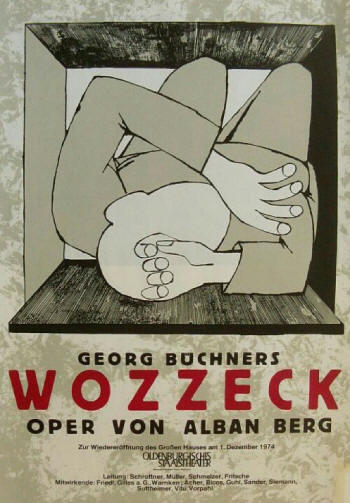
The semi-mythical status
accorded to the bull in so many accounts of the bullfighting apologists, the
stress upon the bull's power, seem to be an attempt to equate the bull with
the tragic hero created before the seventeenth century. In contemporary conditions,
this is archaic and cannot work.
A part, probably a large
part, of the supposed artistry of the bullfight comes from the work with the
cape, the swirling and flowing of the cape. If there were no death and cruelty
involved, it might be fine, impressive, like those displays of flag swirling,
but by no stretch of the imagination a major art form. Skiers can make beautiful,
exhilarating patterns in the snow with their carved turns - and 'extreme'
skiers, who can lose their life with one single mistake, are certainly engaged
in a far more hazardous activity than bullfighters. The Telemark turn of downhill
cross-country skiers '...is so elegant and graceful that onlookers often say
it looks like a waltz.' (Steve Barnett, 'Cross-Country Downhill.') I used to
be a cross-country skier, with a particular interest in cross-country
downhill. But skiers
don't generally claim that their turns amount to an art form. I wouldn't
claim that in the least.
The technique of bullfighting,
such as the action of the wrists, is surely not nearly as subtle, intricate
and complex as the technique of a developed skill such as violin playing,
which makes extraordinary demands on neuro-muscular co-ordination, not just
of the fingers and hand but the shoulder, arm, elbow and wrist, requiring
intense, arduous and protracted study. Working at just one aspect of technique
(and emotional expression) such as the vibrato, requires long and patient
study. (I play the violin and viola.) Both bullfighters and musicians practise,
bullfighters, for example, by sticking banderillas into a target on wheels
or practising killing with a 'killing carriage' but even amateur musicians are surely practising
skills which are vastly more complex than those of the bullfighters. My own
studies with the Hungarian violinist Rudolph Botta have
left an indelible impression. My page
https://www.linkagenet.com/phd/cello-violin-viola-proms.htm
includes some material in the first column of the page.
The appreciation of music
demands insights and emotions of a vastly greater range, vastly more subtle
and complex, than the appreciation of the crowd at a bullfighting. 'The Rough
Guide to Spain' on aficionados: 'a word that implies more knowledge
and appreciation than "fan"' - but, I'm sure, far less knowledge
and appreciation than that needed for a developed art. In my page
Poetry: linkages with music
I provide discussion of some issues.
Bullring ballet
One of the comments on this Youtube video, 'Toro
vomitando sangre,' 'Bull vomiting blood'
http://www.youtube.com/watch?v=D7Y194Y7I3M&feature=g-vrec
'Don't be deceived by your eyes. Just keep saying to yourself, "This is a
beautiful art like ballet." '
To many defenders of bullfighting, including
this comment-writer on the Youtube film, my revulsion at the blood pouring
out of this bull's mouth will seem hopelessly crude and misguided.
According to this perspective, the blood and stabbings,
including the vomiting of blood after stabbing with the sword, are
incidental, not the essence of the corrida: the corrida requires an
appreciation of nimbleness, agility, dexterity, poise, grace, delicacy as
well as strength and above all beauty. Some aficionados regard the corrida
as having linkages with accomplished ballroom dancing - bullring dancing -
but more often linkages with ballet - bullring ballet.
Daniel Hannan writes, ' 'The Spaniard is watching, not a contest, but a
ritualised dance: a relationship so tender and tragic that it might almost
be called love.'
I'm completely familiar with this viewpoint. Anyone
with any knowledge of the writing of aficionados will be aware of it. But I
believe that it's a grossly misleading viewpoint and can't possibly
justify the corrida. Treating the violence of the corrida, its spilling of
blood as incidental, amounts to active distortion and falsification.
No bullfighter can guarantee that he (or she) will kill a bull instantly. A
bull vomiting blood is a common, not a rare occurrence.
The focus of attention here is on bullfighters on
foot, not mounted bullfighters, 'rejoneadores.' In their case, it's the
highly-trained horse which makes the agile and graceful movements.
Clicking on this link shows the end result. The hideous photograph shows, in
the words of the caption, 'Spanish 'rejoneador' or mounted bullfighter Pablo
Hermoso de Mendoza
celebrates his kill during his bullfight at the Santamaria bullring in
Bogota, Colombia ...'
The agility and nimbleness of the banderilleros are
striking, but unlike ballet-dancers, their choreography is subject to
powerful moral objections. Their nimble steps take them up to the bull and
allow them to evade the bull, but the act of stabbing the bull with the six
banderillas is no incidental matter. Hemingway acknowledges the suffering
caused by these stabbings, but writes of the bull, 'I keep my admiration for
him always, but felt no more sympathy for him than for a canvas or the
marble a sculptor cuts or the dry powder snow your skis cut through.' This
is aestheticism without ethics, an evasion, the failure to take into account
the crucial and obvious difference between canvas, marble, snow on the one
hand and the bull on the other: the bull is a sentient being, with the
capacity for pain. Alexander Fiske-Harrison acknowledges the pain caused by
the banderillas too, but only in his internet writing, not in his book. (His
description of his killing of a bull makes it clear that the bull took some
time to die: it's not in the least unlikely that this bull too was vomiting
blood, like the bull in the film.)
No aficionado makes any claim for artistry in the work of the picador who
spears the bull in the first 'Act' of the bullfight, but the injury to
the bull, the sentient being, is far from incidental in this case too.
The 'matador,' like the banderillero, does
attempt a kind of ballet and of a more ambitious kind. The choreography in
both kinds is necessarily improvisational and the circumstances make
completely unattainable any developed artistry fit to be compared with
ballet. The word 'matador' means 'killer.' Aficionados may prefer to think
of the bullring as the stage where the ballet is being performed
but the bullring is after all a slaughterhouse. If nimbleness, agility,
dexterity, poise, grace, delicacy as well as strength and above all beauty
are the essence of the bullfight, then aficionados would find all these
qualities in bloodless displays featuring performer and bull. Blood,
violence and injury are intrinsic aspects of the corrida, central and not
peripheral.
The corrida's linkages with the Roman venationes are
obvious. The Romans watched these fights between men (sometimes women) and
wild animals in their arenas. If, in Roman times, these fights against wild
animals, like the gladiatorial combats in which men and sometimes women were
killed, had developed to stress 'artistry,' and Romans had appreciated the
choreography of the wild animal killers and the choreography of the
gladiators, then the ethical objections to the wounding and killing would be
left undiminished.
An aficionado could be described, not just as a
person who appreciates the corrida in a 'knowledgeable' way, but as a person
who, amongst other things, discounts and evades these intrinsic aspects of
the corrida. When aficionados decry, from their superior knowledge, the use
of the term 'bullfighting,' they are surely evading a central aspect.
Hemingway refers to 'bullfighting' and 'bullfighters' throughout 'Death in
the Afternoon,' but some aficionados would be unwilling to grant that
Hemingway was an aficionado at all. The back cover of Alexander
Fiske-Harrison's 'Into the Arena' mentions 'bullfighting,' 'the bullfight'
and 'fighting bulls.' The 'true essence' of the bullfight is described as
'man against bull in a life or death struggle from which only one can emerge
alive.' (But this is misleading. The bull is overwhelmingly likely to emerge
dead, the bullfighter overwhelmingly likely to emerge alive, despite any
impression of comparable risks.) As in the case of Hemingway, Alexander
Fiske-Harrison uses throughout his book the terms 'bullfight,'
'bullfighting' and 'bullfighter,' in a way which may well offend refined
aficionados who prefer not to associate their art with violence or even with
what Daniel Hannan describes as 'contest.'
The account in which Daniel Hannan claims that 'The
Spaniard is watching, not a contest, but a ritualised dance: a relationship
so tender and tragic that it might almost be called love' also contains
this, 'The bull took two pics, the second of which went in repeatedly and
way off to one side. After the banderillas, as the bull stood spurting
fountains of blood ... ' there was 'a miserable excuse for a
sword-thrust into the bull’s flank.'
I'd prefer to use the term 'bull-stabber' rather than
'bullfighter.' There are three kinds of bull-stabber: the picador, who stabs
the bull with a lance, the banderilllero, who stabs the bull with barbed
banderillas, and the matador, who stabs the bull with a sword. But on this
page, I use the established word 'bullfighter.'
Any claim by aficionados that the anti-bullfighting
activist is bound to have an 'external,' view of bullfighting, or, as they
would prefer, the 'corrida,' that the activist can't possibly
understand the world of the aficionado or the matador, is very much
mistaken. We're not in the least fated to understand only those things we
support and appreciate or to fail to understand those things we oppose.
Readers have access to many, many worlds at great {distance} from what
happens to be their own world, worlds provided by the great novelists and
writers of non-fiction and worlds it's possible to understand by our own
insights: the worlds of Anna Karenina, Madame Bovary, Raskolnikov, Malone,
of fictional and non-fictional politicians, shopkeepers, financiers,
labourers, criminals, detectives and of course so many more worlds -
including the worlds of aficionados and matadors.
The aficionado who feels superior to bullfighting
supporters who are non-aficionados and very much more superior to opponents
of bullfighting relies amongst other things on superior knowledge of the
correct terms - 'the corrida,' instead of 'bullfighting,' for example, and
may well feel that correcting the misconceptions of others amounts to a
confirmation of the importance and legitimacy of the activity - not so. The
aficionado has a knowledge of these terms, and many more (the quotation is
from 'Into the Arena,' Chapter 17):
'Using the language of the first matador, Pedro
Romero, you need parar, templar and mandar. Parar means
'to stop' or 'to stake' - as in poker - and refers to the matador standing
his ground. Templar means 'to temper' or 'to tune', adjusting the
cape to the bull's charge and / or adjusting the bull's charge with the
cape. Mandar means 'to send', with the sense of command, and refers
to sending the bull safely away from the body to the place of your
choosing.' There follows a discussion of a further term, cargar la
suerte, which he translates as 'to load the dice'. (The Club Taurino of
London proudly displays these terms on the Home Page of its Website.)
John Gordon's account 'Morante de la Puebla:my
Morantismo, his Tauromaquia' (published by the Club Taurino of London
in 'La Divisa') is a fairly representative account of intricate and
technical aficionado writing, more so than anything in Alexander
Fiske-Harrison's book, or Hemingway's, for that matter. An instructive
quotation: ' ... not only are his molinetes quite belmontinos, but his
kikirikís are reminiscent of Gallito and his naturales de frente are his
particular tribute to the post-war toreo of Manolo Vázquez.' He has an
aesthete's as well as a technician's viewpoint, assessing the 'technical and
aesthetic' performance of the matador Morante, commenting amongst other
things on the common passes and the less common passes, including the 'media
chicuendina. ' He discusses named individual passes and the linkage ('ligazón')
of passes [not an aspect of linkage which appeals to me at all], and the
various actions, such as swivelling, pivoting, leaning, the shifting of
weight.
Tristan Wood, also writing in 'La Divisa, in a very matter
of fact way about another bullfighter:' '
'At Barcarrota, he [José Luis Moreno] gave his opening Sepúlveda toro some
decent verónicas [passes with the cape, the caape held up in front with both
hands] before watching it savage the picador’s horse in a huge derribo,
[knocking over] the bull rolling the caballo [horse] as it lay on the ground
and inflicting a cornada [horn wound] in its right flank.' Tristan Wood is
the author of 'How to watch a bullfight.'
As soon as it's realized that watching
gladiators fight to the death in the Roman arena would no more be
legitimated by technical terms and 'knowledge' than bullfighting (or the 'corrida')
then the aficionado's pride and status are suddenly shown to be
without any foundation. If the Romans had developed the 'aesthetic' aspect
of gladiator-fighting and had developed 'artistic' moves, instead of
stressing brute force, skill and courage, then the {separation} of the
aeesthetic and the ethical would be clear (I don't of course deny that there
are linkages.)
John Gordon notes that 'Morante is very poor with
the sword in his hand, and this is surely the most mediocre side of his
toreo. It is only necessary to watch the way he lines up for the kill, his
right arm seemingly contorted and in the wrong place. What is worse, he goes
“out” away from the bull before he has even reached the jurisdiction of the
morrillo. [morillo: the large muscle mass in the region of the bull's neck.]
Ultimately, there is a lack of conviction when he goes in for the
swordthrust, and, when one does not enter believing that the sword will go
in, more often than not, the result will be a pinchazo.' A pinchazo is the
term for the sword hitting bone. There may be repeated pinchazos and when at
last the sword sinks into the bull without hitting bone, the bull may not be
killed. John Gordon writes purely as an aesthete, completely indifferent, it
seems, to the fact that the bulls Morante attempts to kill so badly will be
suffering intensely. He refers to 'the delicate grace that underlines his
aesthetic personality.' John Gordon's account, like the account of other
aficionados, is subject to extreme {restriction}. It takes no note of the
moral dimension. In the same way, the gourmet-aesthete finds some foie-gras
'mediocre,' some, allegedly, 'heavenly,' and can supply some plausible
taste-terms, without giving any thought to the moral dimension.
It's often argued that aficionados deplore some
common events in the bullring - bulls left weak or almost helpless when they
have been lanced by the picador too vigorously, bulls which take a long time
to die when the killing sword is used. Their objections have nothing to do
with humanitarian ethics at all. They are simply thinking of their own
enjoyment, with the limited perspective of the aesthete rather than a moral
being. It would be possible to eliminate tampering with the bull before it
enters the ring but once it's in the ring, it's impossible to eliminate
these absolutely common events, since the picadors, banderilleros and
matadors are never able to stab the bull in the 'correct' places, in the
conditions of the bullfight, and even if they were, moral objections would
remain.
Aficionados' knowledge of the bullfight
and its technical terms, the much lesser knowledge of almost all
opponents of bullfighting, prove nothing about the moral status of the
bullfight. If an opponent, unlike the aficionado, is unaware that the sword
thrust is intended to pierce the aorta of the bull not its heart and is
unaware that the sword thrust is called an 'estocada,' unless it hits bone,
in which case the term is 'pinchazo,' then the act of killing is in no way
legitimated by the superior knowledge of the aficionado. In the same
way, the traditonal Roman Catholic doctrine of hell isn't legitimated by the
superior knowledge of the Roman Catholic theologian and the misconceptions
of the atheist, who may be unaware of the distinction, for example, between
mortal and venial sins.
The technical terms of bullfighting aren't to be
equated with the technical terms of ballet. They're the technical terms for
one or another instances of gross cruelty or its accompaniments. The
aficionado knows that a mounted bullfighter is called a 'rejoneador' and
that the rejoneador uses 'rejones de castigo' ('lances of punishment')
before using the banderillas and eventually the 'rejón de muerte' ('lance
of death), the 'descabello' being used on the spine after that in many
cases. Opponents of bullfighting who know only that the bull is stabbed
repeatedly before being killed have enough knowledge to come to
an informed view of the morality of the acts - something which the
superior knowledge of the aficionado doesn't guarantee in the least.
Bullfighting has linkages with ballet, but ballet is
an incomparably more developed art than bullfighting. Aficionados like John
Gordon can point to a repertoire of movements in bullfighting, ones
which they see performed very well or not nearly so well, but the actions of
ballet are incomparably more intricate, skilful and varied. The predominant
motion of the bullfight, on which other movements are superimposed, is
monotonously elliptical to a considerable extent. The bull is forced to move
around the bullfighter in approximate more or less elongated ellipses,
more often ragged than smooth, again and again. The actions of ballet are
anything but monotonous. (But bullfighting isn't objectionable primarily on
aesthetic grounds such as these.)
Aficionados who now feel an urgent need to
supplement their 'knowledge' with an understanding of ethical dilemmas
and ethical debate in general, have at least and at last begun to appreciate
the enormity of their task, but are surely untypical. 'Afición' is generally
knowledge of one sphere and shocking ignorance of other spheres of direct
relevance to the continued existence of the activity they support.
Bullfighting and 'duende'
He went and saw it often,
Lorca:
the bulls' as they stumbled and died
suddenly glazed eyes,
as if no longer able to comprehend
the Spanish arguments for death and torture.
From frantic sun to shade,
overshadowing the dazed end
of Lorca's 'poetic' lies -
fated to be scythed
and doomed
to fade.
(My poem 'Lorca')
Lorca, the Spanish poet, gives us his thoughts
on 'duende' and death in his essay 'Theory and Function of the Duende:'
the full
text of the essay in English translation.
He writes of duende that
'its most impressive effects appear in the bullring.' Duende, he claims, isn't
needed for all phases of the bullfight, but 'in the work with the cape, while
the bull is still free of wounds, and at the moment of the kill, the aid of
the duende is required to drive home the nail of artistic truth.' And, 'Spain
is unique, a country where death is a national spectacle, where death sounds
great bugle blasts on the arrival of Spring.' He refers, of course, to the
start of the bullfighting season at Easter, but his reference to Spanish uniqueness
is obviously wrong, ignoring the bullfighting traditions in Southern France
and Latin America.
Duende encompasses the
death of people as well as bulls. I give statements from one short paragraph
of Lorca's essay, on separate lines, so that their profundity, or stupidity,
stands out more clearly, depending on the views of the reader:
'In every country death
has finality.
Not in Spain.
A dead person in Spain is more alive than is the case anywhere else.'
The dead of the Somme,
Passchendaele, Verdun and Auschwitz and the other extermination camps, being
almost all non-Spanish and dying far from Spain, are denied, then, the consolation
of being 'more alive' enjoyed by, for example, the Spaniards who died in the
Spanish civil war, the Spanish women who died in childbirth before the development
of modern medicine, the victims of the Spanish Inquisition, as well as their
torturers and executioners.
So many of Lorca's claims
are superficially deep, reminding us of the 'dark gods' of D H Lawrence at
his worst: 'the duende has to be roused from the furthest habitations of the
blood,' and 'quoting the Spanish composer Falla: 'all that has dark sounds
has duende.'
Lorca sharply distinguishes
duende from the Muse, 'which stirs the intellect' and the Angel. The Muse,
according to Lorca, 'lifts the poet into the bondage of aristocratic fineness,
where he forgets that he might be eaten, suddenly, by ants, or that a huge
arsenical lobster might fall on his head - things against which the Muses
who inhabit monocles, or the roses of lukewarm lacquer in a tiny salon, have
no power.' In a similar style, he refers to 'that other melancholy demon of
Descartes, diminutive as a green almond, that, tired of lines and circles,
fled along the canals to listen to the singing of drunken sailors.' This from
someone who has a towering reputation in European culture.
He goes so far as to give
a definition of duende, one of the most useless and empty definitions imaginable:
'a mysterious force that everyone feels and no philosopher has explained.'
As is shown by the fact that the definition was originally drawn up by Goethe
to describe the violinist and composer Paganini.
How does an Andalucian
with the Anadulucian view of death regard those who do everything they can
to save life? Grudgingly? I think that the Andalucian attitude, like the acceptance
of Rilke, fails. With apologies to the people of Andalucia who aren't so limited
as to share these obsessions and confusions.
Bullfighting and
seduction
'From the Website of the
French anti-bullfighting organization 'Alliance anti-corrida,' 'Bullfights
use the very perverse effects of seduction: colours, costumes full of light,
brass bands, sunshine. Everything is set up in order to mask the bloody reality.
To this list could be added the haughty or grimly determined look of the bullfighter in his (or
sometimes her) colourful costume. Although these are completely familiar, I include an
image. It evidently shows a bullfighter superimposed on a separate image of
a bullring background but the image of the bullfighter is important here,
not the background.
The morality of the bullfight can never be confirmed by
any of its outward trappings. The costumes of the matadors, the
procession before the bullfight, the language ('the moment of truth'), the music, to
some people (but the brass bands may well be found completely unseductive)
convert some people to the substitute religion or supplementary religion of the bullfight, they make
the bullfight acceptable to many, many people, or far more than
'acceptable,' but that is all they are - trappings, appearances.
If horses and bulls were treated in the bullring in exactly
the same way as now but the bullfighters were people in nondescript clothes
who made no attempt to pose, if 'the moment of truth' were to be described
as 'the attempt at killing,' then the immorality of bullfighting would be
even more widely recognized.
Bullfighters and bullfighting supporters aren't 'Nazis' - this is a word that
has to be used very carefully - but there are linkages in the use of
seduction and propaganda and in their mythologizing. Nazi Germany understood
very well how to seduce the senses and mask the reality of its brutal and
degraded regime: torchlit processions, the vast displays of might at
Nuremberg. Leni Riefenstahl's film 'Triumph of the Will' shows the Nuremberg
uses Wagner's 'Götterdämmerung, the beating of drums, the singing of the Horst
Wessel-Lied, the shadow of Hitler's plane, the consecration of Nazi Party
flags, a giant swastika, silhouetted men, vast numbers of men. Ethical depth
so often requires looking beyond the seductive appearance and if most Germans
at the time never did so, some Germans were never fooled, and often paid with their lives.
The Roman Catholic Church has brought
many into its fold and kept many within it despite any doubts by its very
often masterful use of visual spectacle, the visual appeal of priestly
vestments, by the musical and architectural riches which are part of its
heritage, by the evocative language of the Mass. But again, it's necessary
to look beyond any seductive appearances. Roman Catholic theology -
including the ban on artificial methods of contraception and abortion
in all circumstances, the concept of mortal sin, until not so very long ago
the belief that unbaptized babies could never enter heaven, the belief in
hell, and the rest - cannot possibly be confirmed by any of these outward
trappings.
Cultural
stagnation
The attention given to
the bullfight in Provence, Seville, Madrid and all the other places is a sign not of colourful
tradition but of stagnation. Any region or country with vitality tries to
preserve its strengths and reduce its weaknesses. To be unchanging, to be
oblivious to the better intellectual and cultural currents of the age, is
a sign of weakness.
Great Britain, but particularly
England, has a very high regard for tradition but it has at least recognized
that tradition can be a sign of weakness as well as strength. It's remarkable
that Britain, with all its faults, transformed itself from a bull-baiting
and bear-baiting and fox-hunting country, one with no real tradition of animal
welfare, to one with such a care for dogs, cats, and injured wildlife, and
one which has achieved a very great deal in the abolition of factory farming,
although not nearly enough.
Countries, as well as people, are not condemned
to repeat the past, to perpetuate traditions that have become unacceptable
for very good reasons. Practices that seem deeply embedded in a society, too
much a part of its tradition to be reformed or abolished, can be ended.
Hanging by the neck is
an ancient English tradition that has gone. It might have been expected that
Spain's fondness for the death penalty would have been reversed with more
difficulty. Not so. Execution by garotte and shooting was ended in Spain in
a dramatic way. To their credit, not one member of the Spanish parliament
voted against abolition. Before bad practices are ended by legislation, though,
they may wither away, regarded as obsolete, as an embarrassment. This will
be an essential preliminary to the abolition of bullfighting in the bullfighting
countries.
Andalucia, along with
Castilia, is the European region most closely associated with the bullfight.
It's argued - more often, simply stated - that Andalucia is so receptive to
bullfighting because of the attitude to death there. Northern Europeans, and
others, are supposed to confess their limitations at this point, to confess,
helplessly, that they can't possibly understand death like the Andalucians,
being so much more superficial. That's why so many Northern Europeans, and
others, are outraged by the bullfight. They lack this sense of life mysteriously
interlinked with death. And how does an Andalucian interpret and make sense
of, from the depth of Andalucian insight, those vast repositories of death
outside Andalucia, such as the Somme, Passchendaele, Verdun, Stalingrad, and
Auschwitz and the other extermination camps?
Martin Seymour-Smith is
a writer I appreciate. I quote him in a number of places in this
site. Yet he supported the bull-fight (whilst opposing fox-hunting). His biography
of Robert Graves has a photograph which shows the two of them attending a
bullfight, Robert Graves looking very worried, Martin Seymour-Smith with a
look of evident appreciation. He was a man of contradictions, although of
course hardly alone in this. Goya was an ardent supporter of the bullfight
and drew pictures of bullfighting scenes, but he is obviously a great
painter, as in his unforgettable series of pictures
'The Disasters of War,' and from such masterpieces as 'The Third of May, 1808:
The Execution of the Defenders of Madrid' and 'Saturn eating his son,' Goya
had deep insights into the violence of the world. I regard his failures in regard to
bullfighting are failures in what I refer to as {adjustment}.
I've digressed to make
it clear that I see the need to recognize that bullfight supporters are not
necessarily to be condemned totally, given no credit for any strengths. Their
strengths may be very substantial.
Arrival in Provence for
the first time from Northern Europe. Impressions, the experience of countless
travellers: the heat of the day, the wonderful warmth of the evenings, the
powerful leafy scents, the quality of the light, the blue skies, the cypresses,
the unexpected wildness of the landscape, French spoken unexpectedly, with
a different accent. Is not the ordered bullfight just another sign of local
distinctiveness? To abolish it to make a reduction of contrast?
In other places in this
site, I've made clear that reduction of contrast can't be regarded
mechanically
as always good. It has to be evaluated. There are
many, many colourful customs, distinctive of a region, which have involved
unnecessary harm to men, women or children, as well as animals. Their loss
has been a gain.
If we carry out a ((survey))
of a region, or a whole country, we find that there is so much to
interest us. Provence has so much to interest any traveller that the loss
of the bullfight would be insignificant. A survey of the pleasures available
would include so much - a very partial list would include the pleasures of
eating, of wine, of emotional intensity, sexual intensity, of the landscape,
of nature, of the genuine arts, the true arts not fatally compromised by any
dependence on the infliction of suffering and death. The bullfight apologist
might even discover that the world of animals becomes an absorbing interest.
The English writer V S
Pritchett describes the pleasures of life in Spain in 'The Spanish Temper'
and 'Foreign Faces.' In 'Foreign Faces,' he gives a memorable portrait of
Seville, the city of Figaro and Don Giovanni. The overwhelming impressions
as he enters the city: 'Inside the city white walls are buried in bougainvillea
and wistaria and all climbing flowers, geraniums hanging from thousands of
white balconies, great lilies in windows, carnations at street corners, and
roses climbing up the walls and even the trees so that all the gasps and hyperbole
of pleasure are on our lips.' He goes on to describe momentous, thrilling,
dramatic aspects of life in Seville. As for the bullfights held there, '...this
spectacle has its terrible periods of boredom...There are plenty of people
in the crowd coming away from the bull ring complaining of the enormous prices
charged, the commercialisation of the show and the decline in its quality.'
The 'decline in its quality:' V S Pritchett judged the whole thing purely
in terms of human pleasure. He was uncritical, a gifted but limited writer.
Animals:
appreciation and abuse
The Italian poet Umberto Saba on the pathos
of one animal, the original followed by my translation
La capra
Ho parlato a una capra.
Era sola sul prato, era legata.
Sazia d'erba, bagnata
dalla pioggia, belava.
Quell'uguale belato era
fraterno
al mio dolore. Ed io risposi, prima
per celia, poi perché il dolore è eterno,
ha una voce e non varia.
Questa voce sentiva
gemere in una capra solitaria.
In una capra dal viso
semita
sentiva querelarsi ogni altro male,
ogni altra vita.
The goat
I talked to a goat.
He was alone in the field, tethered,
fed up with grass, soaked
with rain, bleating.
That same bleating was
brother
to my sorrow. I answered, first
as a joke, but then because sorrow's for ever,
has a voice and never varies.
This voice I sensed
moaning in a solitary goat.
In a goat with a semitic
face
I sensed all ills lamenting,
all lives.
There's a linkage between
bullfighting, surely, and a pitifully limited appreciation of animals and
care for animals, a linkage between bullfighting and other abuses of animals,
even if there may be exceptions. Bullfighting apologists do, genuinely,
appreciate the power of the bull, the magnificence of the bull (both the power
and the magnificence are destroyed by the punishing power of the picador's
lance and the banderillas, so that it's a shadow of the magnificent animal,
an animal weakened by injury, loss of blood and pain which faces the final
act.) Bullfighting apologists are far less likely than so many other people, surely,
to appreciate, to sympathize with, to commune with, to feel pity for, to want
to help, all the animals which lack the power and strength of bulls but which
have grace, charm, usefulness, or which have no particular appeal to any human
preferences but which simply have mysterious 'otherness:' to feel the compassion
of Umberto Saba, or of Thomas Hardy. This is from Thomas Hardy's poem, 'Afterwards:'
If I pass during some
nocturnal blackness, mothy and warm,
When the hedgehog travels furtively over the lawn,
One may say, 'He strove that such innocent creatures should ...come to no
harm,'
Feelings like these, present
in bullfighting countries but surely in stark contrast with the predominant
ethos of a bullfighting country, are infinitely more valuable than the grandiose
posturing which is bullfighting's depraved contribution to the world.
As with life-enhancing
feelings, so with opposition to organized mass cruelty, it could confidently
be predicted that the bullfighting countries would not be in the forefront
of opposition to the cruelties of factory farming. When the European Union
voted to phase out the battery cage (although the so-called 'enriched cage,'
a slightly larger battery cage, is a very poor compromise), the only country
which voted against was - Spain.
Bullfighting and
mono-culture
The 'culture' in 'monoculture' refers to the growing of crops, of course:
monoculture is cultivation of one crop to the exclusion of all others, or
the overwhelming dominance of a single crop. Monoculture has severe
disadvantages. It may entail the loss of genetic diversity, aesthetic loss,
loss of interest, the monotony of uniformity, and practical loss, such as
the loss of plants which feed beneficial insects and other creatures.
The term 'monoculture' is sometimes used without reference to
agriculture. In this case, the reference is almost always to dominance, not
to the complete exclusion of alternatives. I use the hyphenated term
'mono-culture' where the 'culture' refers not to cultivation of crops but to
aspects of artistry, major or minor, and, to an extent, the wider world of
'ideas, beliefs, values, and knowledge' (Collins English Dictionary).
It seems to me that in the areas of Spain where bullfighting is
actively pursued, there's a mono-culture of bullfighting which is unhealthy.
Bullfighting doesn't exclude all other forms of 'culture,' obviously, in
these areas, but it does have dominance. In Andalucia, for example,
cante jondo flourishes, to an extent, but is less prominent than
bullfighting and has linkages with it.
The mono-culture of bullfighting is uninteresting as well as unhealthy.
Nature writing in English is one of the glories of English literature - the
nature writing of American writers such as Thoreau as well as such English writers as
Gilbert White, in 'The Natural History of Selborne,' Richard Mabey and of
course so many others, and in other countries as well as these,
including a host of superb lesser-known writers.
I'd include in this number
Jennifer Owen, who wrote 'Garden Life.' She writes of swifts, 'In July,
swifts wheel and scream in the sky above the garden. Their elegant, black
silhouettes, tracing ever-changing patterns against the clear blue of early
morning or the opalescent glow if evening, lift the spirits of the most
earthbound gardener.'
Many of these writers have revealed the glory of humble creatures, such
as moths. They are prominent in 'Garden Life.' Thoreau writes in the closing
section of 'Walden' that 'Every one has heard the story which has gone the
rounds of New England, of a strong and beautiful bug which came out of the
dry leaf of an old table of apple-wood, which had stood in a farmer's
kitchen for sixty years ...'
Spain's natural history is richer than England's in many respects, but
the English have made incomparably more of their heritage of natural history
than the Spanish, I'd claim. The mono-culture of bulls has surely
impoverished Spanish nature writing. Apart from its cruelty, the
mono-culture of bullfighting in large areas has impoverished Spanish
culture.
If it's conceded that nature writing and
appreciation of nature are strengths of English culture but argued that
English culture, unlike Spanish culture, largely ignores death, and that
this is an obvious weakness of English culture, then I'd argue in turn that
this is a gross distortion. The Spanish preoccupation
with death can easily be paralleled in earlier English culture. English
parish churches - important to many an intransigent atheist, including
myself - are full of reminders of 'memento mori.' English culture has
far more of classical balance now: remembrance and grieving rather than
a preoccupation with death which could be called obsessive, the public and private remembrance of our
war dead, including those who died fighting against fascism, and the
countless acts of private remembrance and grieving obviously observed to a
greater or lesser extent in
every country, not only in Spain.
The biography section of a very comprehensive library or a very
comprehensive bookshop contains biographies and autobiographies of
scientists, engineers, mathematicians, explorers, travellers, poets,
novelists, essayists, politicians, generals, soldiers, sailors, airmen,
painters, architects, financiers, administrators, nationalists, anarchists,
communists, conservatives, comedians, gardeners, ordinary people with
ordinary or extraordinary lives - obviously, the number of categories is
immense. It may even include, in the case of very comprehensive libraries,
the biographies of a few bullfighters.
Are the claims to importance made by
bullfighting supporters to be believed in the slightest? Is the adulation in
the least healthy? Would the biography
section of a very comprehensive library or a very comprehensive bookshop be
anything other than pitiful if it contained not much more than biographies
of bullfighters or books such as Alexander Fiske-Harrison's 'Into the
Arena,' which belongs to the genre of autobiography?
Does bullfighting
really encompass a large part of what is important in the world, or so much that's
important?
Miriam Mandel is the editor of 'Hemingway's Dangerous Summer: the
complete annotations,' a scholarly pro-bullfighting work - but its
accumulated detail undermines the bullfighting case. There's revealing
information about the extent of 'afeitado,' tampering with the bull by 'horn
shaving.' Miriam Mandel shows the usual aficionado's awe-struck and
credulous opinion of bullfighters, extending even to bullfighters'
biochemistry and physiology, or at least the biochemical and physiological
processes concerned in wound healing. These, it seems, are different from
those of lesser people: 'Injuries require a bullfighter to absent himself
from the ring, but these enforced absences are often surprisingly short
(bullfighters seem to heal more quickly than other people).'
An account: unprotected horses in a
bullfight
An extract from the account of a spectator who was sickened by
what he saw at a bullfight, Sir Alfred Munnings. It comes from his autobiography, published
in 1955. The account is based on what he saw at a pre-peto bullfight. Carmen
was obviously not sickened by what she saw at bullfights. She liked what she
saw.
'I have sat at dinners given by the American Ambassador in Spain with a
titled Spaniard as my neighbour, hearing things of bullfighting not written
in books. Have we read in those novels extolling the matador, of living
skeletons - once horses - ridden not only to slaughter but in a tawdry
procession? Have we read of punching, horning, or weeks of durance between
Sundays, with flies crawling over festered wounds, as the victims, not
killed, await in the stables NEXT SUNDAY’S SPORT? Watch such a procession,
and see some fifteen sorry steeds, doomed, starved, carrying heavy, stuffed
out picadors. No wonder the horses are hurled to the ground, overweighted,
weak and half-dead.
'Passing the tall archway, I had seen a little white horse. To my surprise
it was in the procession, carrying a great picador, and the next thing we
saw was the little white horse and another in the ring. This humble white
horse stood there blindfolded, his ears stuffed and tied, little knowing
what he was there for. Oh, little white horse; Little White Horse!’ I kept
repeating to myself, as the bull put a long horn right through the little
horses neck, just above the windpipe.
'Imagine the fright of the horse, blindfolded and deaf, at the sudden
stab. Then the bull, his horn through the neck of the horse began dragging
it slowly round with him, the picador dismounting and others in the ring
trying to free the horse, now no longer a horse, but a holiday victim, the
blood running down its white jaw and neck.
'When cleared, and the picador remounted, the bull charged, hurling man
and horse backwards with a crash against the wooden barrier. ‘Oh little
white horse.’ I said to myself and, the picador being rescued, and the bull
attracted away, they beat the horse to its feet with blood streaming from a
wound in its chest, down its white legs. The time was up for the horses, and
the white horse and the other - a starved emaciated bag mare were led out
to come in again. The little white horse's end came later.
'The bay, its teeth chattering with fear, having been in before, stood
near the barrier below us, the motley red and white striped bandage over its
offside eye, its ears stuffed with tow, and tied with what seemed to be old
electric wire. The Bull made short work of the bay horning the horse from
behind. The picador cleared, and the horse beaten to its feet by red-shirted
attendants. There, from the underpart of its belly hung a large
protuberance of bowels. With head outstretched a man hauling it along on
the end of the rein, another hitting it with a stick, it was led out.
'Not a soul cared, excepting ourselves.
'But what of the white horse? He too was lifted and hurled on his back, to
the cheers of the crowd, and when beaten to his feet was stomping on
his own entrails, which stretched and split like pink tissue paper.'
Pro-bullfighting views. Freedom of expression
I've never at any time
attempted to suppress pro-bullfighting views, Anti-bullfighting activists
who do try to suppress pro-bullfighting views are very much mistaken - not
mistaken about bullfighting, obviously, but very much mistaken in opposing the free
flow of ideas.
All attempts to suppress pro-bullfighting books or other printed
materials, to suppress pro-bullfighting films or internet materials, to
suppress pro-bullfighting talks and lectures, are misguided. In 'the
marketplace of ideas,' The anti-bullfighting
case needs no censorship of pro-bullfighting views at all.
The
principle that there should be a free flow of ideas, information and evidence
is a principle under attack. It's essential to defend it. I know of one
organization which called upon a bookseller to remove a pro-bullfighting book
from sale and was successful. This was a bad mistake on the part of the
organization and the bookseller. There are many threats to freedom of
expression, threats which may be veiled or violent. They come from
believers in political correctness, radical Islamists and many others,
including animal rights activists.
Before I could read Alexander Fiske-Harrison's
Into the Arena it was necessary for me to buy a copy. The idea that I
should be expected to criticize Alexander Fiske-Harrison's defence of
bullfighting on the basis of a few things I'd heard, without having read the
book, is repugnant. My very critical discussion appears in
my page on bullfighting. It
includes information about Alexander Fiske-Harrison's censorship of my
own comments but I include a further example here.
Alexander Fiske-Harrison writes on his blog, 'By the way, I have
noticed that various animal rights protesters are complaining that I have
blocked their comments on this blog. Well, that’s easy enough to answer: I
will post any comment that is civil and unthreatening.'
This is simply not
true. One comment I sent to him simply gave some of the material in the
previous paragraphs about the importance of supporting freedom of expression for
writers on bullfighting such as himself. That comment was blocked, perhaps
because it included this: 'I regard anti-bullfighting arguments as
decisively, overwhelmingly superior to pro-bullfighting arguments. The
anti-bullfighting case needs no censorship of pro-bullfighting views at
all.' The comment I submitted was completely civil and unthreatening, and
all the other comments I submitted have been completely civil and unthreatening, but
have been
censored by him, except for a much earlier set of comments, very brief,
simply stating my intention to discuss 'Into the Arena.'
I showed that his reaction to one comment could easily be
explained - he'd simply not read most of what I'd written, by his own
admission. He was condemning what he hadn't read. He refused to post this as
well. I'd raised one particular issue which he seems determined not to
discuss openly - the fact that the bull he killed had blunt horns and
had apparently been subjected to the procedure called 'afeitado,' judging by
the photographs in 'Into the Arena.' This would have made the bull -
which was in any case far from being a full-sized animal - much less risky
to fight.
After this mention of suppression of views by Alexander Fiske-Harrison, I
return to suppression of views by some anti-bullfighting activists.
The British bullfighter Frank Evans planned to give a talk at a bookshop in
Manchester. It was cancelled because of the threat of disruption. Again,
this was a bad mistake. Alexander Fiske-Harrison was invited to give a
talk at Blackwell's bookshop in Oxford, death threats were made, allegedly,
and the talk was rescheduled. I obtained a ticket for the event.
On his Website, Alexander Fiske-Harrison writes, 'I am happy to announce
that unlike Salman Rushdie, I will actually be talking at my venue -
Blackwell’s of Oxford – regardless of protests.' It would have been better if
he hadn't invited readers to compare his situation with that of Salman
Rushdie. The danger in which Salman Rushdie found himself was incomparably
more serious than the dangers facing Alexander Fiske-Harrison.
As in the case
of his exploits in the ring, Alexander Fiske-Harrison exaggerates
the dangers he faces. The animal rights movement (for the record, I'd describe
myself as involved in animal welfare, as one activity among many, not animal
rights) includes dangerous as well as
deluded people, but their dangerousness (their lethal intent)
isn't to be equated with the fanatics who were out to get Salman Rushdie and
anyone associated with his book, 'The Satanic Verses.' In that case,
lethal intentions were followed by lethal results. Destruction of
property in the name of animal rights is quite another matter. It has been far
more extensive than media reports would suggest. I discuss briefly the
Animal Liberation Front and its misguided and ineffectual tactics in my page Animal
welfare: arrest and activism.
Then Alexander Fiske-Harrison posted this on his blog:
Following the temporary cancellation of my Oxford talk on my book Into The Arena and
vastly exaggerated reports of death threats etc. abounding in
the Oxford
Times and Oxford
Mail ... ' If so, why did he make any comparison with Salman Rushdie? In
his case, the death threats weren't exaggerated. Now his talk has been
cancelled, since hardly any tickets had been requested.
Whatever the level of threats to the author, if bookshops have been put under pressure not to stock Alexander
Fiske-Harrison's 'Into the Arena,' (or such books as Hemingway's 'Death in
the Afternoon') then is this to be only a starting-point? I discuss the
cruelties of foie gras production in the section
Three Spanish Restaurants. Bookshops (and libraries) may have many books
on their shelves which 'promote' the use of foie gras, particularly books on
French cookery, and not just ones on haute cuisine. Are they to be
removed? There are many animal rights campaigners who would agree with or
use the slogan 'Meat is murder.' I don't agree with the slogan at all. But most of these people would have the
sense (I hope) to realize that removing all but vegetarian and vegan cookery books
from bookshops and libraries is an impossible (as well as undesirable)
objective.
No bookshop can be anything like as comprehensive as a large library, of
course. Are large libraries - including the largest of them all in
this country, the British Library - not to include on their shelves 'Into
the Arena,' Hemingway's 'Death in the Afternoon' and other books defending
bullfighting? Published books have to be made available, to
scholars, to readers of all kinds - including opponents of the views
expressed in some of these books. A good bookshop should give hints of
comprehensiveness, at least.
Supplementary information, but the most
comprehensive library of all, an imaginary library, is described in a short
story by the Argentinian writer Jorge Luis Borges, 'The Library of Babel.'
This contains 'all that it is given to express, in all languages. Everything
...'
Running a bookshop is a demanding activity, now more than
ever. It's completely wrong to pressurize a bookshop for any of these reasons.
If the owner or manager of a bookshop has scheduled a talk by a
pro-bullfighting writer for the near future and is approached by a person or
an organization asking for the event to be cancelled, what is the owner or
manager to do? Abandon all but the most essential duties and spend an
intensive week or two studying as many aspects of the issue as possible as
thoroughly as possible before coming to a decision? Not forgetting to read
'Into the Arena.' Or assume that the
objector's arguments (which are unlikely to be detailed ones - the objector
is very unlikely to have read the book) are correct
and cancel the event immediately?
The anti-libertarian, pro-censorship 'principle' of
'no platform for ...' doesn't usually take the form of 'no platform for
bullfighting supporters.' It's usually no platform for 'racists,' and a
variety of other human rather than animal issues (and we're supposed to take
it for granted that the objectors are correct in their understanding
of 'racist' and 'racism,' that their intelligence and freedom from bias are
beyond dispute. They may describe people who want to set limits to
immigration into this country as 'racists.')
Similar issues are raised when
people who advocate boycotts of Israeli products approach the owner of a
shop or the manager of a supermarket which stocks Israeli products. Again,
is this owner or manager expected to examine the arguments and evidence in
depth before coming to a decision? Or is the owner or manager to
assume that the boycotters' case must be correct and clear the shelves of
Israeli products at once?
My page on Israel gives detailed information
about another attempt to enforce a boycott of Israel. The Israel
Philharmonic Orchestra was due to play at the Proms. Pro-Palestinian
activists called for the performance to be cancelled. What were the
management to do in the week or so after receiving this call? Study the
relevant history of the Middle East, and in particular the history of the
Palestinian-Israeli conflict, make a comparative study of human rights in
Israel and other countries of the Middle East, such as Iran, Syria and the
Lebanon and Saudi Arabia, make a further comparative study of war and
conflict and of the action which has been taken by democratic countries,
totalitarian countries and countries with other forms of government in
waging war, including such issues as blockades and protection of
non-combatants, study the international legislation concerned with these
issues, study the arguments and evidence deployed by supporters of
Israel and opponents of Israel, do a little research into moral philosophy
and the different approaches to deciding difficult moral issues, such as
consequentialism - whilst continuing the intensely demanding task of
coordinating the nightly concerts of the Proms season?
Or was the management
simply to assume that the pro-Palestinian activists must be correct and to
cancel the Israeli Philharmonic Orchestra's concert without delay - and to
add the task of explaining the action to aggrieved concert-goers and
defending themselves in the courts for breach of contract to their
work-load? In the event, the management stood firm and the concert went
ahead, but was disrupted.
Anti-bullfighting censors are far outnumbered by censors of a very
different kind, such as radical Islamist censors, They may well be
unaware of the context, or indifferent to it: the assaults on freedom of
expression from many different directions.
In my page on Israel I write: 'Countries that can be considered free have been surrendering more and
more of their freedoms. Complacency and lack of resolve have allowed them
to slide towards an Age of Post-enlightenment. Most often, freedoms have been
eroded by the growth of informal censorship, self-censorship, strong disapproval,
but sometimes by new legislation.'
Kenny Hodgart writes well about one such
piece of legislation in this country:
'Freedom of speech was hard-won in the West; the freedom only to speak inoffensively
is no freedom at all ... Never mind the freedom to speak offensively: people
have been invited to believe there is such a thing as the right not to be
offended. Never mind that 'incitement to hatred' is a grey, disputable thing,
and a different thing to incitement to violence, which was already a criminal
offence. Never mind that most ideas are capable of giving offence ... And
never mind that in the marketplace of ideas, 'hate speech' can be challenged,
debated or ignored. What we now have is moderated free speech at best.'
Nigel Warburton, in his 'Free Speech: a very short introduction,' writes,
'Defenders of free speech almost without exception recognize the need
for some limits to the freedom they advocate.' I think this is true, and
well put. I'm a libertarian in matters of free speech but not an absolutist
libertarian. In the terminology I use, I recognize {restriction}: (free
speech). I discuss {restriction} and the
{theme} theory of which it forms a
part on other pages.
Nigel Warburton writes, again very cogently:
'Holmes, like Mill, was committed to defending freedom of speech in most
circumstances, and, explicitly defended the value of a ‘free trade in ideas’
as part of a search for truth: ‘the best test of truth,’ he maintained, ‘is
the power of the thought to get itself accepted in the competition of the
market’. Holmes wrote passionately about what he called the ‘experiment’
embedded in the US Constitution arguing that we should be ‘eternally
vigilant’ against any attempt to silence opinions we despise unless they
seriously threaten the country – hence the ‘clear and present danger’ test
outlined in the quotation above. Holmes as a judge was specifically
concerned with how to interpret the First Amendment; his was an interest in
the application of the law. Mill in contrast was not writing about legal
rights, but about the moral question of whether it was ever right to curtail
free speech whether by law, or by what he described as the tyranny of
majority opinion, the way in which those with minority views can be
sidelined or even silenced by social disapproval.
'Both Mill and Holmes, then, saw that there had to be limits to free
speech and that other considerations could on occasion defeat any
presumption of an absolute right (legal or moral) to freedom of speech.
Apart from the special considerations arising in times of war, most legal
systems ... still restrict free expression where, for example, it is
libellous or slanderous, where it would result in state secrets being
revealed, where it would jeopardize a fair trial, where is involves a major
intrusion into someone’s private life without good reason, where it results
in copyright infringement (e.g. using someone else’s words without
permission), and also in cases of misleading advertising. Many countries
also set strict limits to the kinds of pornography that may be published or
used. These are just a selection of the restrictions on speech and other
kinds of expression that are common in nations which subscribe to some kind
of free speech principle and whose citizens think of themselves as free.'
I'd make the point that 'permitting' is obviously different from
'approving.' 'Permitting whilst loathing' will often be a response in a free
society. It expresses my response to Alexander Fiske-Harrison's stance
on bullfighting - and his killing of a bull - but I see the need not just to
'permit' the publishing and sale of his book and talks by the author but
a passionate upholding of the principle of free expression, if not
expression without some {restriction}.
In a wide range of moral and other issues, some of the most fatuous
objections often come from people who mechanically point out an alleged
inconsistency and ignore the most significant differences. 'You object to
bullfighting, but you eat meat!' Alexander Fiske-Harrison, a meat-eater
himself, argues along similar lines. (I point this out, as a vegetarian.)
'You object to Iran acquiring nuclear weapons. But Britain has nuclear
weapons! (Ignoring the vast differences in political responsibility and
restraint.) If German research in atomic physics had been more advanced
before the end of the Second World War, then the argument, equally idiotic,
might have been, 'You object to Germany acquiring nuclear weapons. But the
United States has now acquired nuclear weapons!'
So much for these tidy and unformed minds and their reflex responses.
'
'

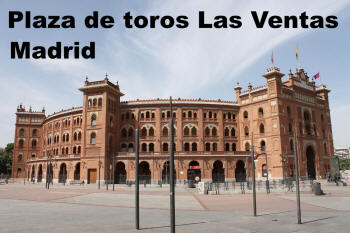
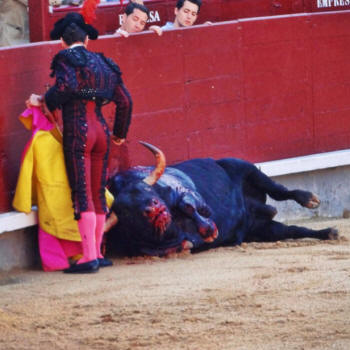


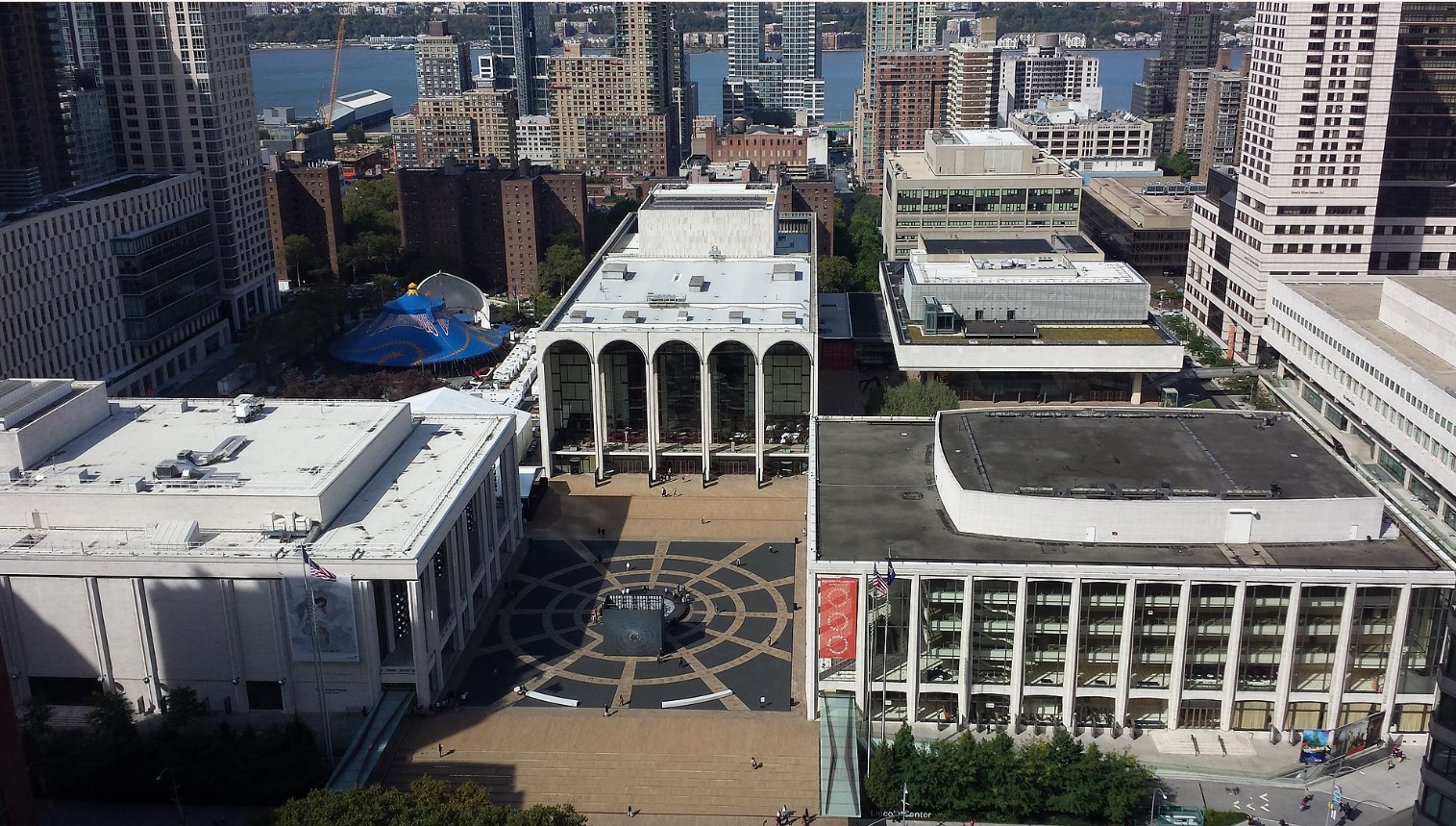
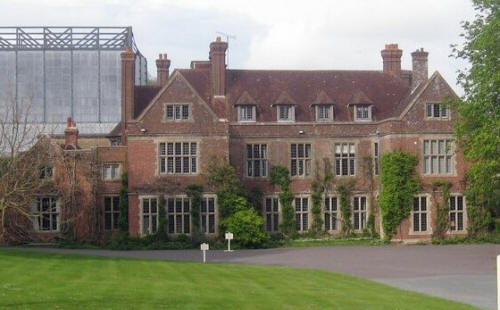
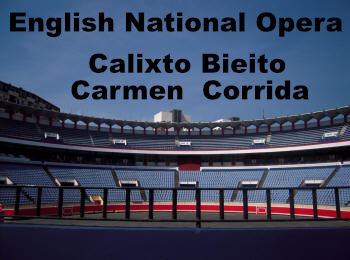
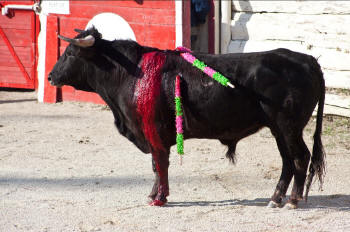
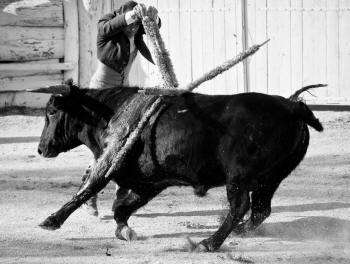


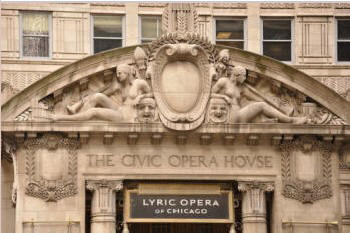
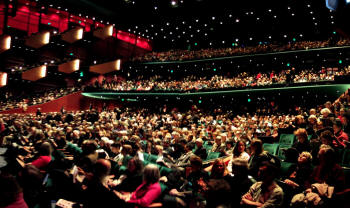









 6
6





















